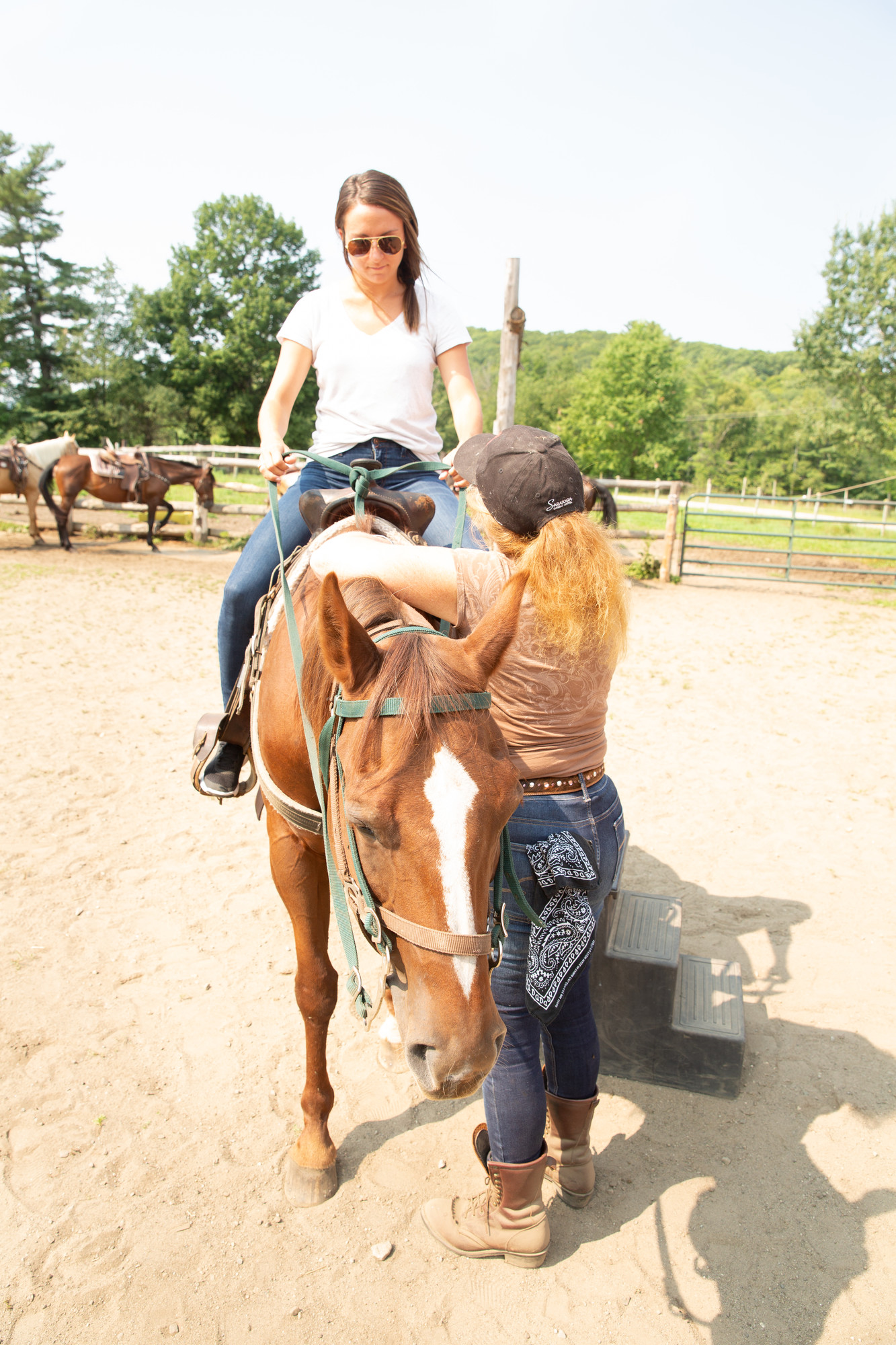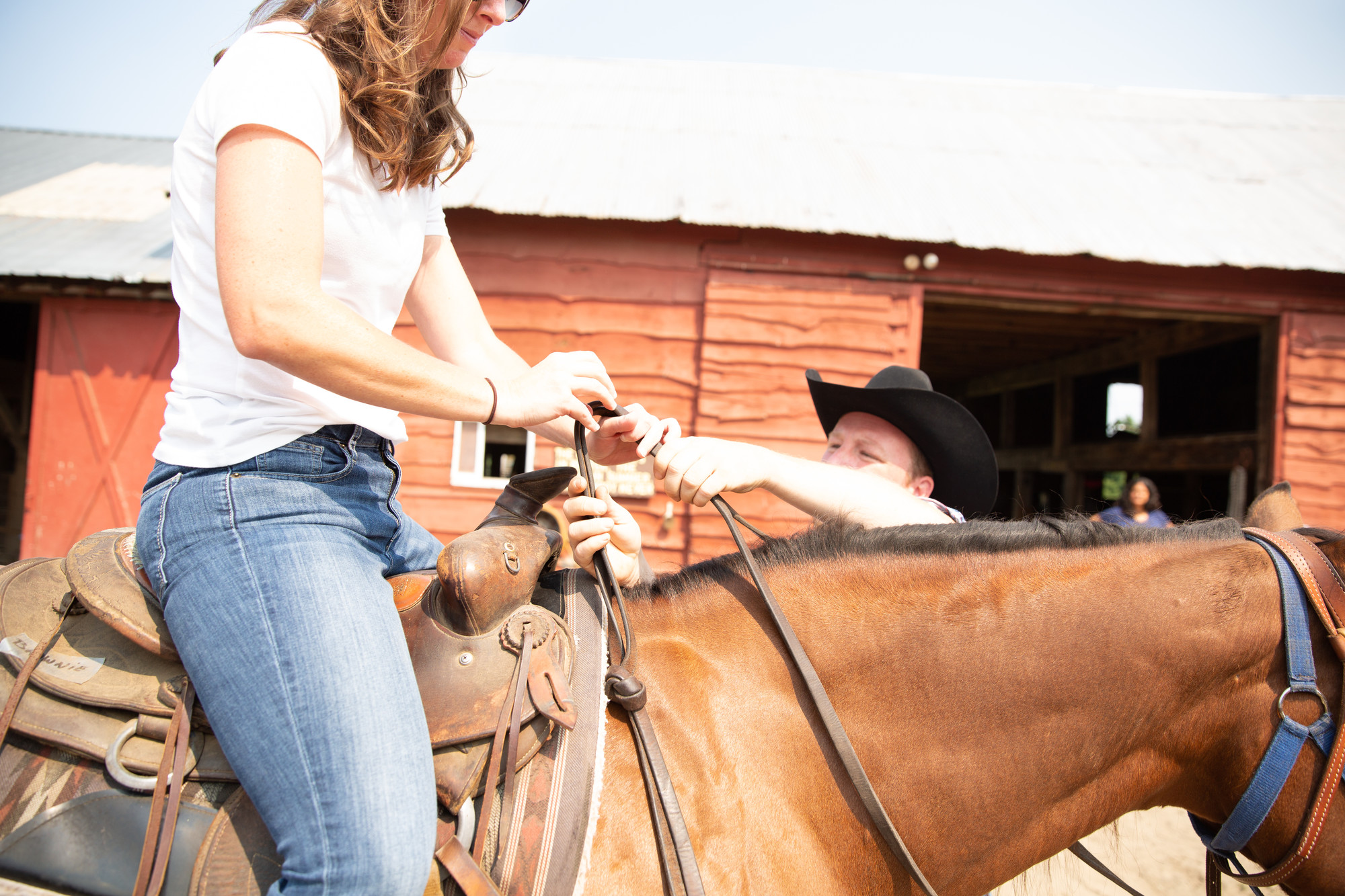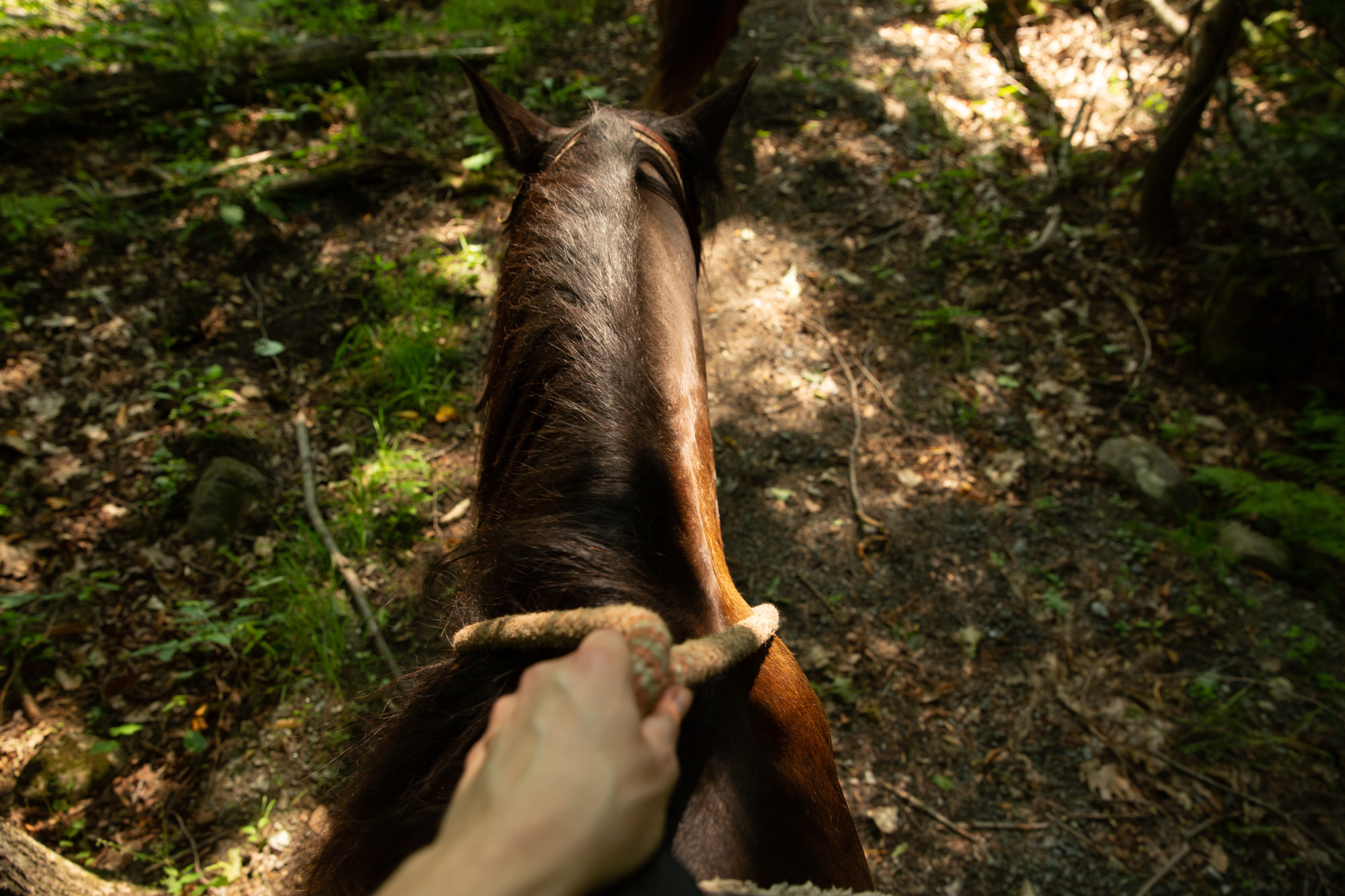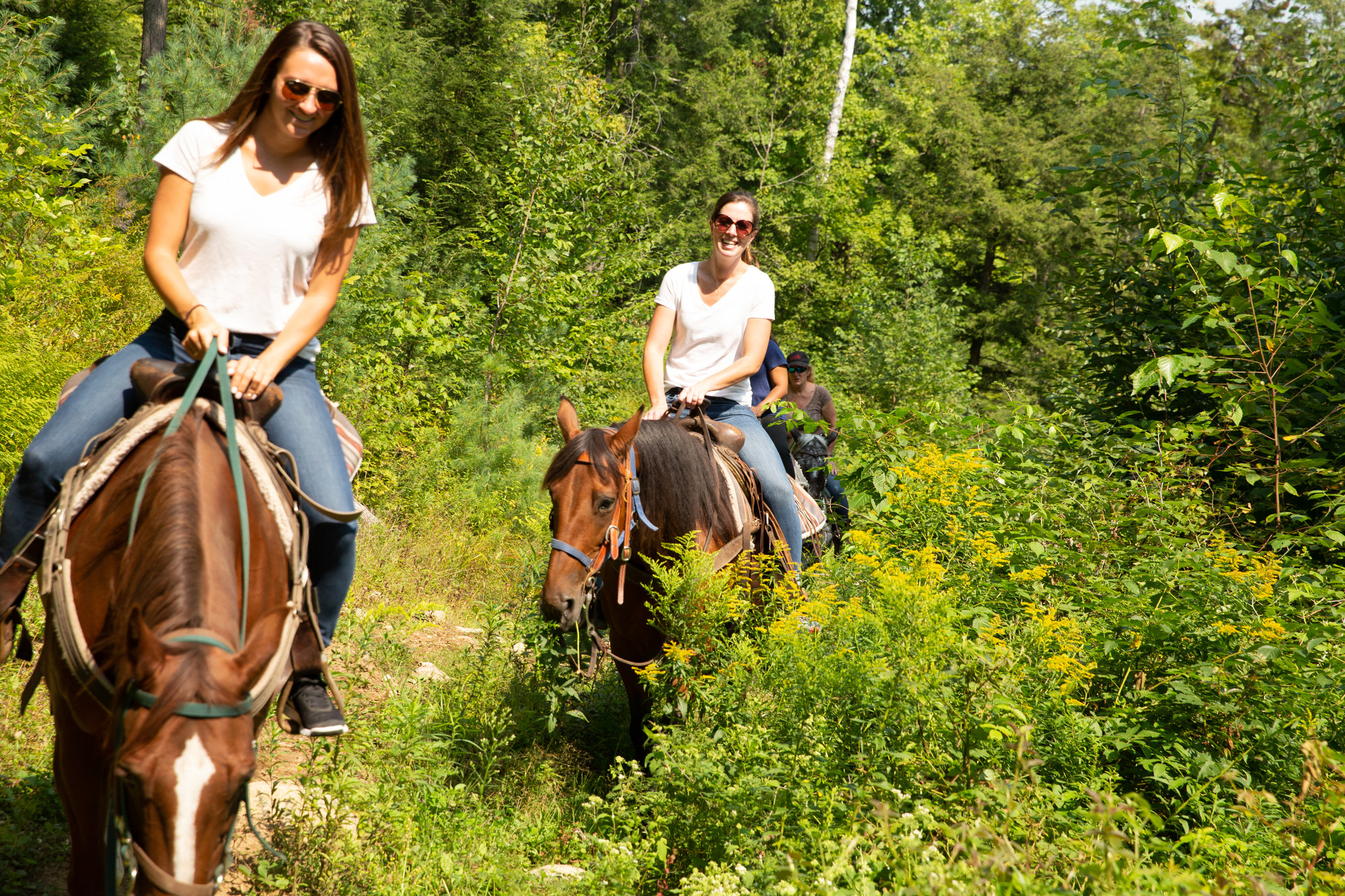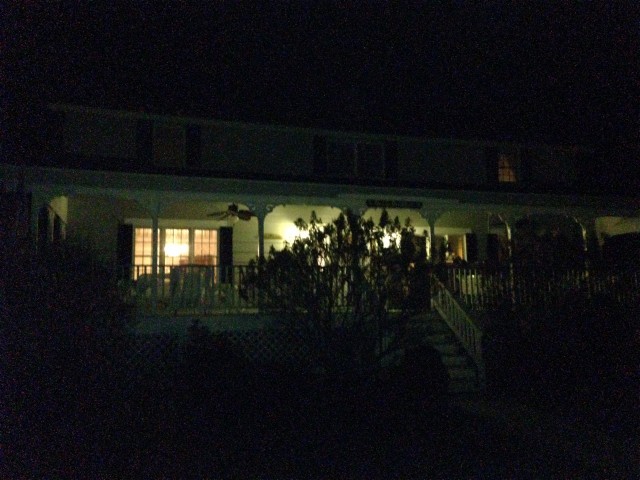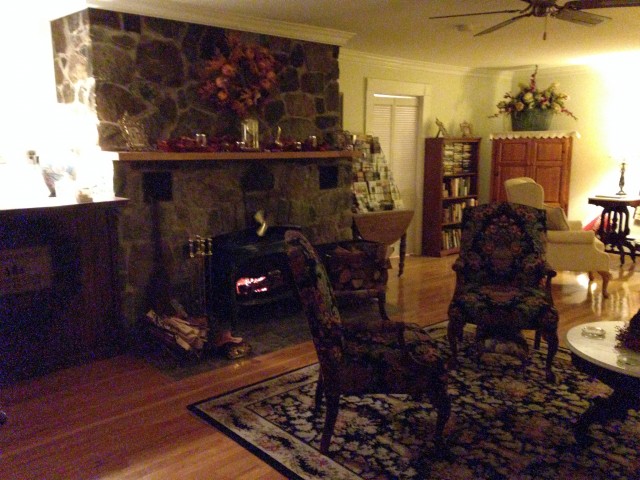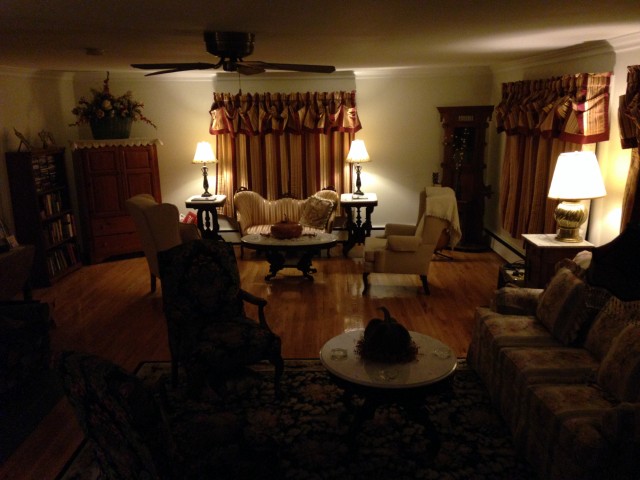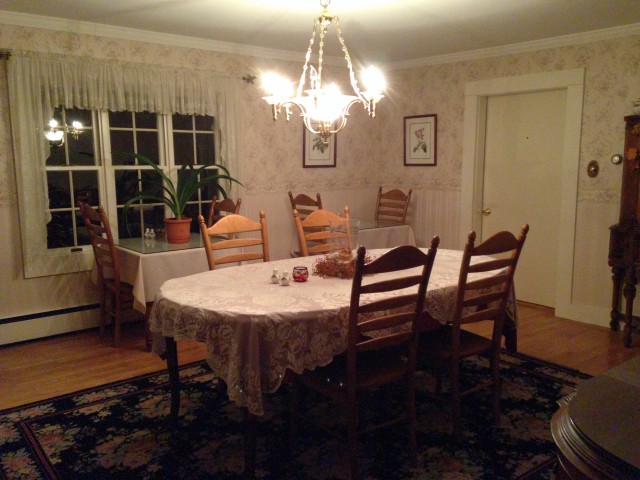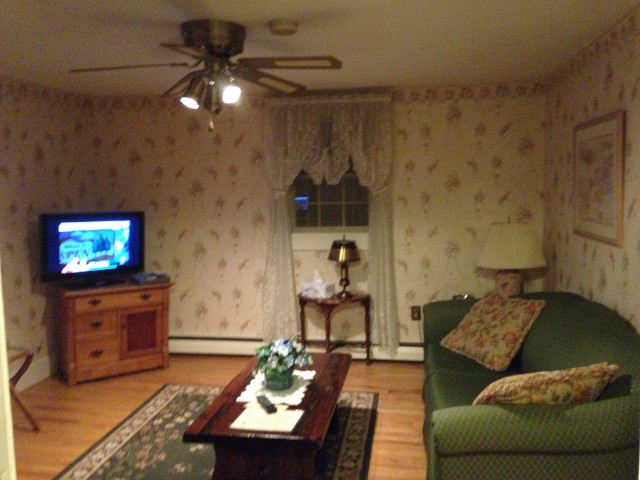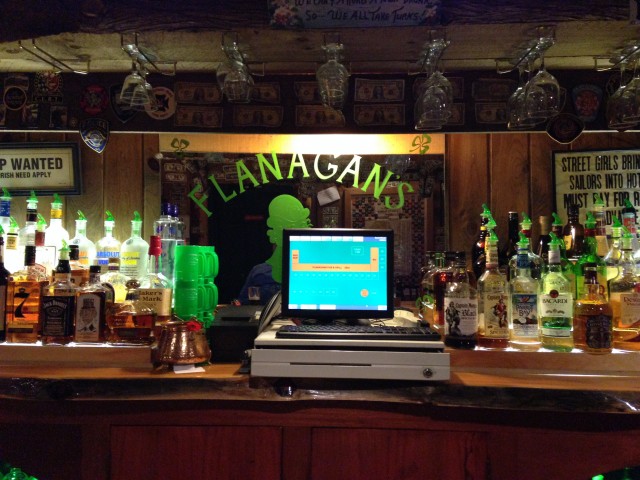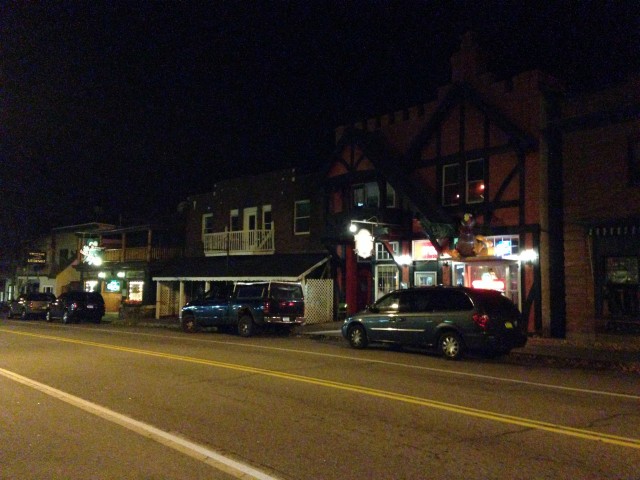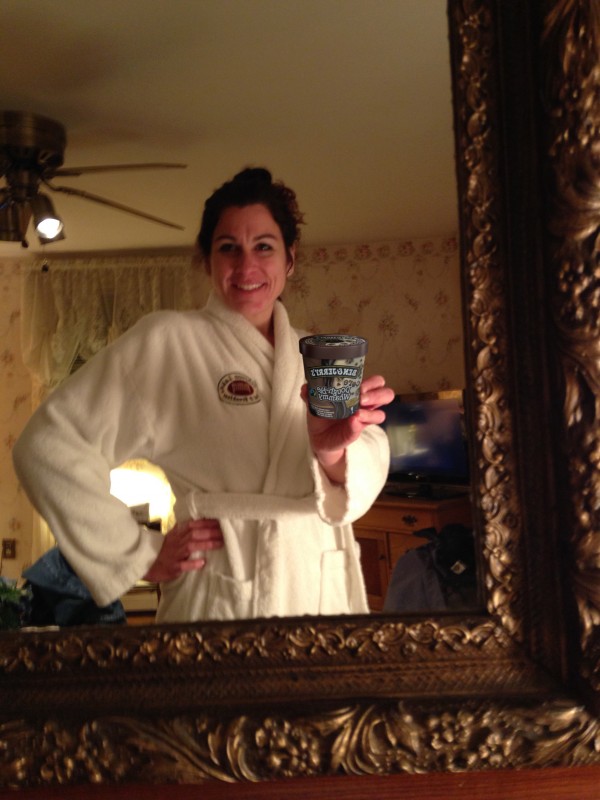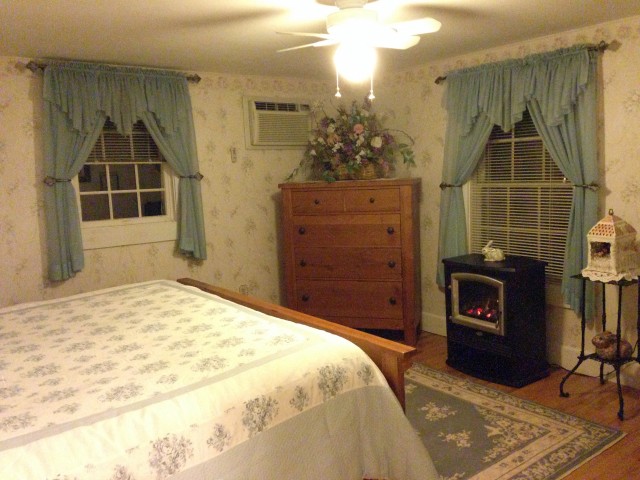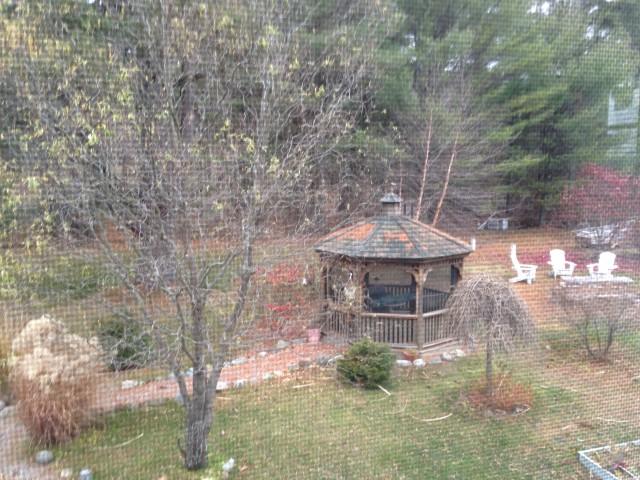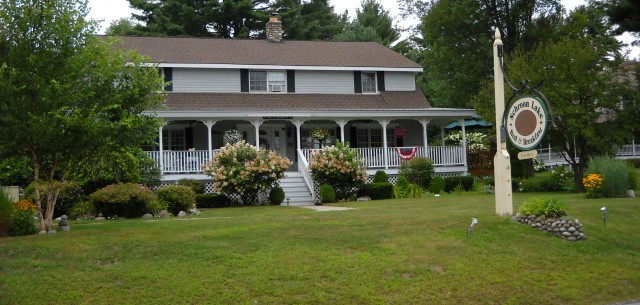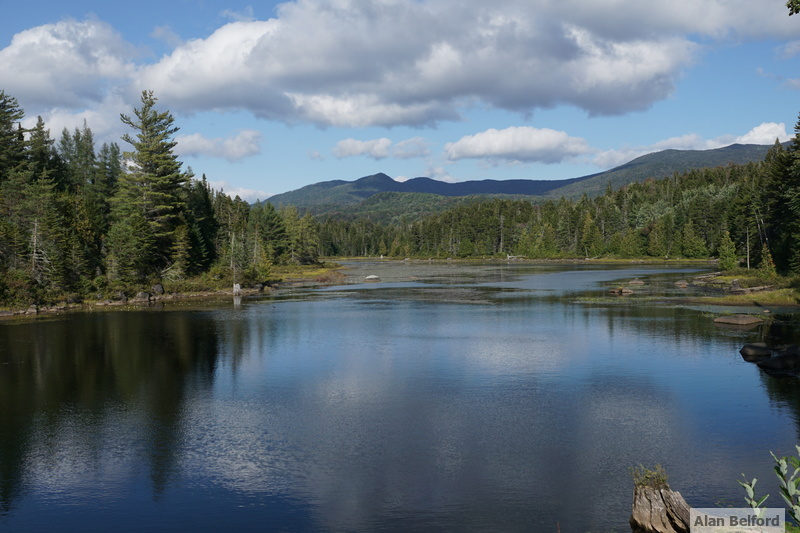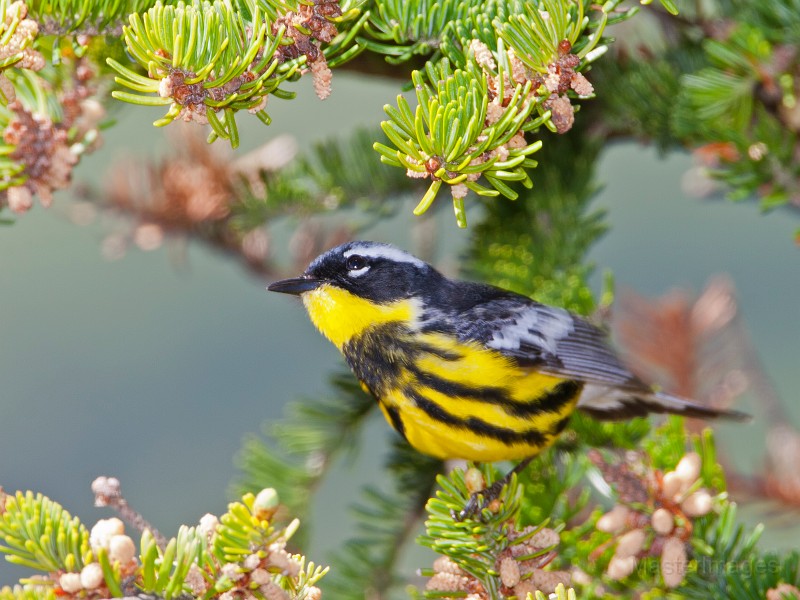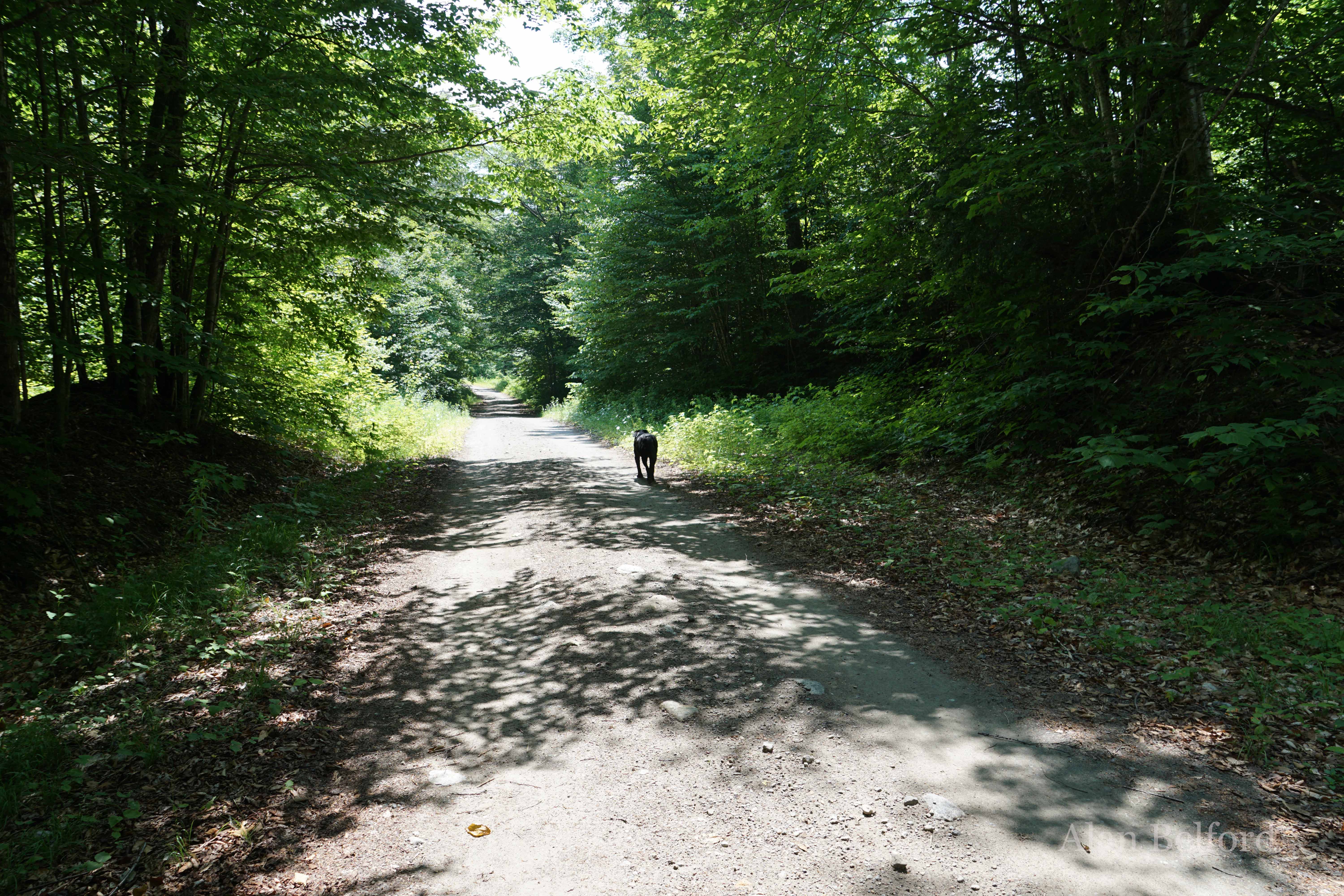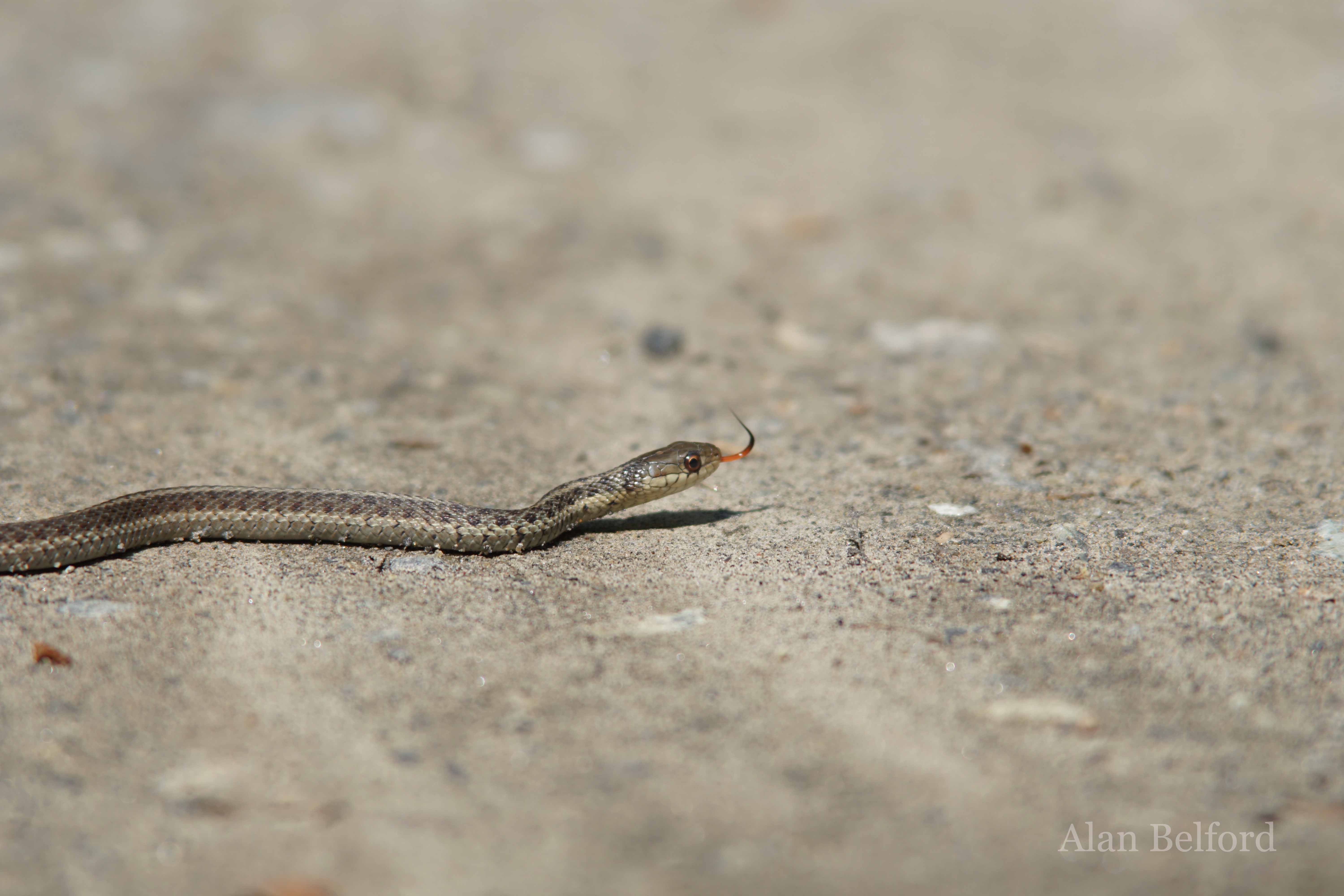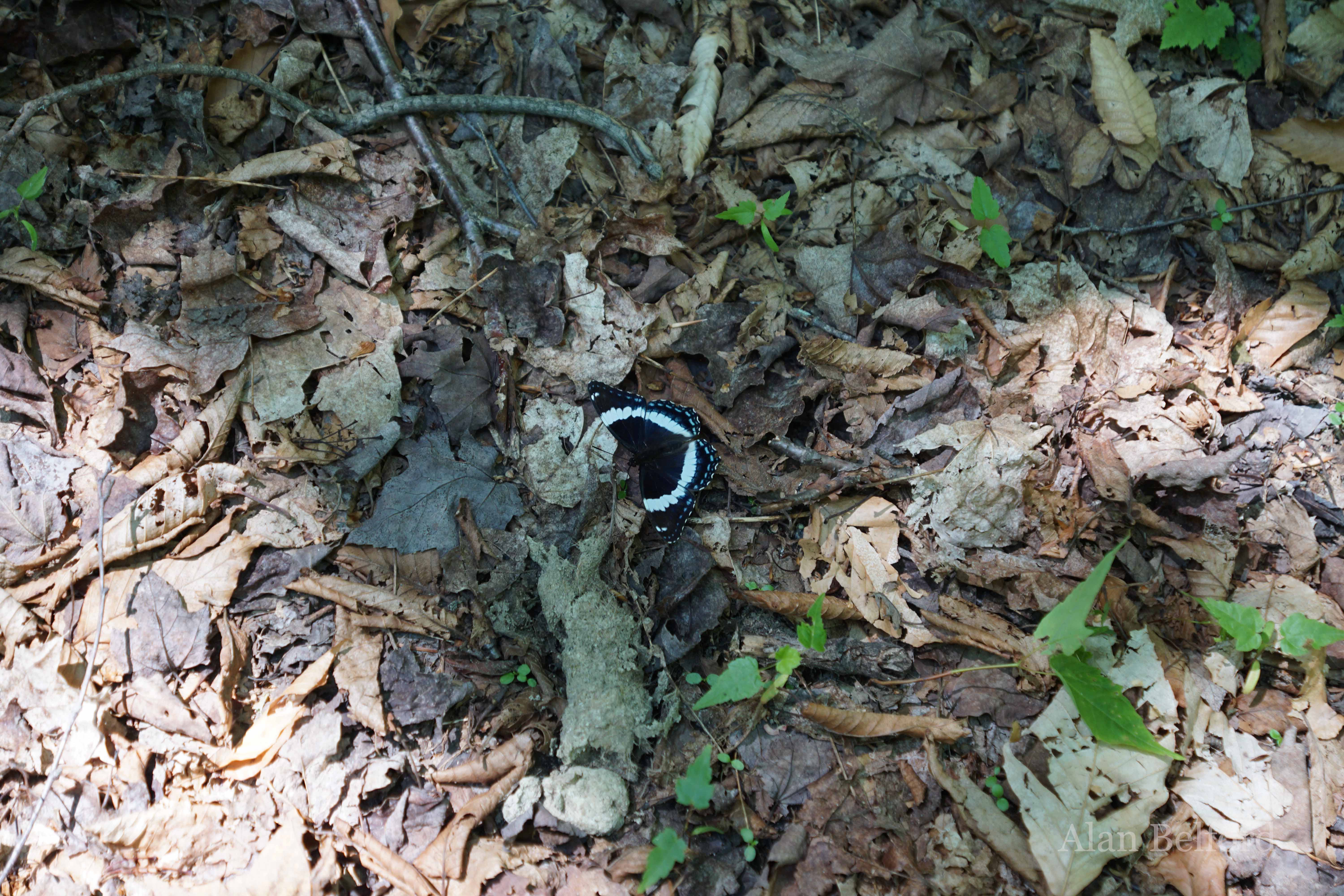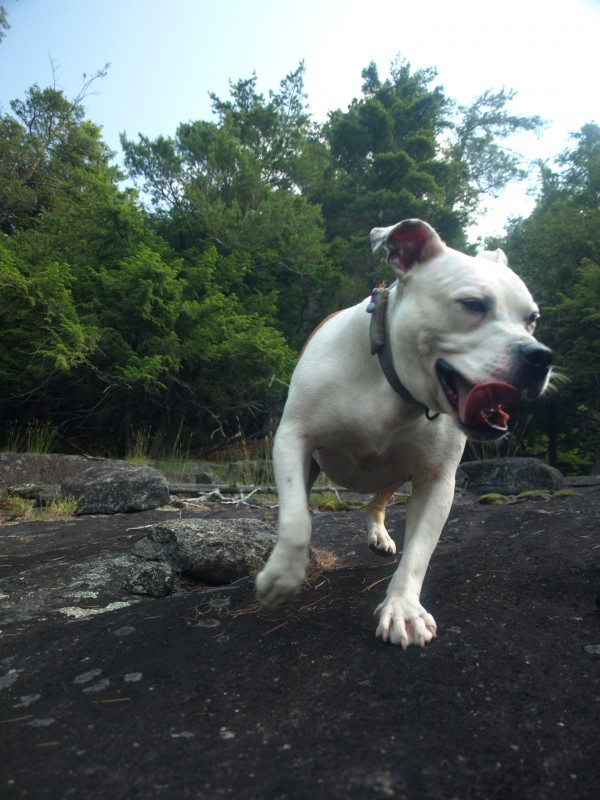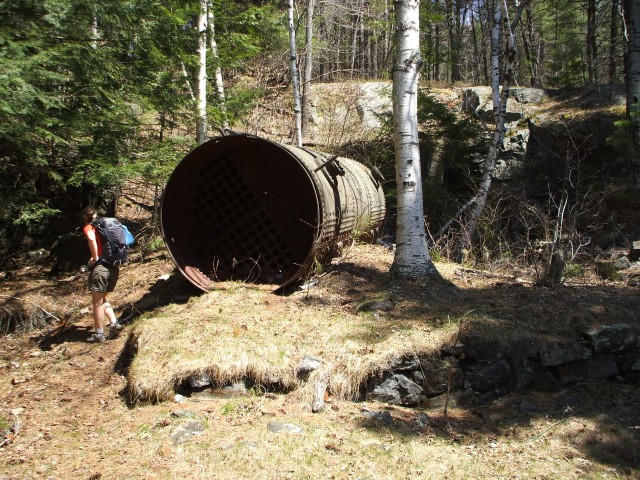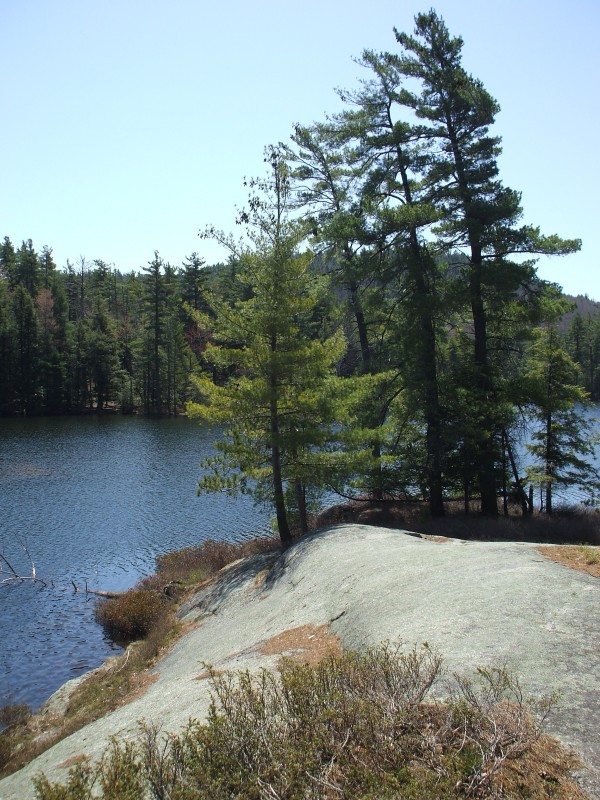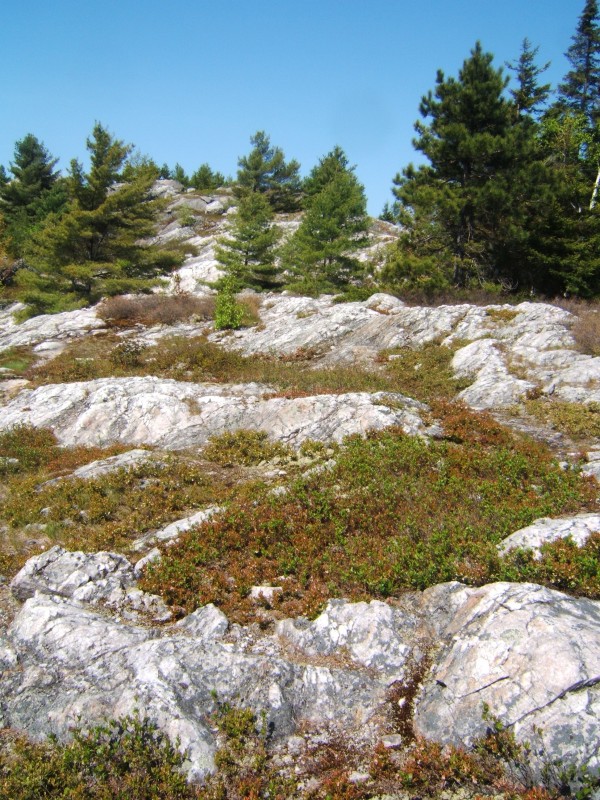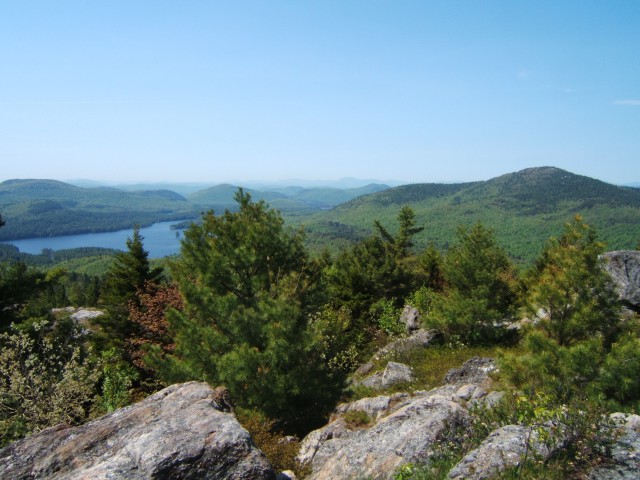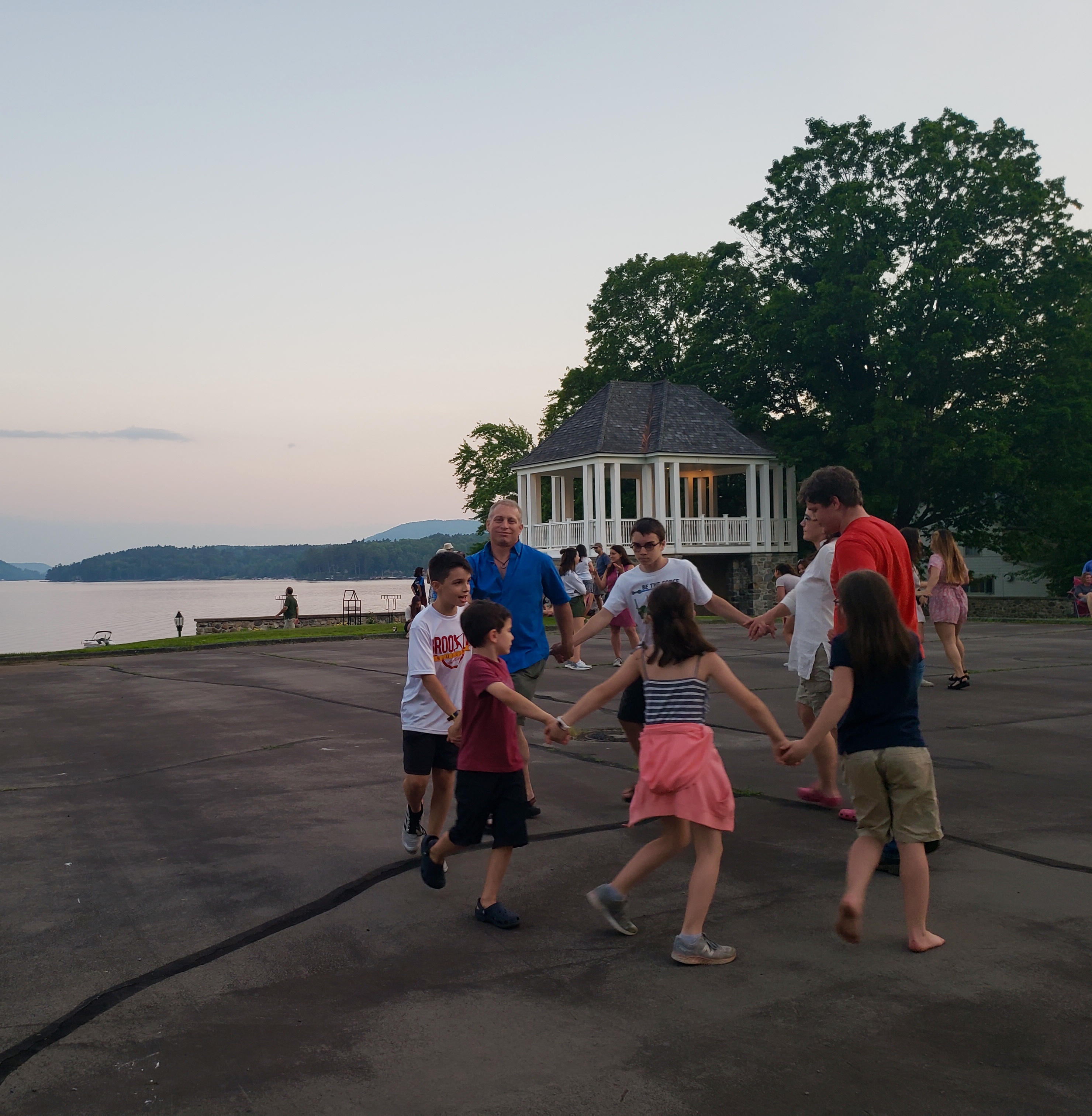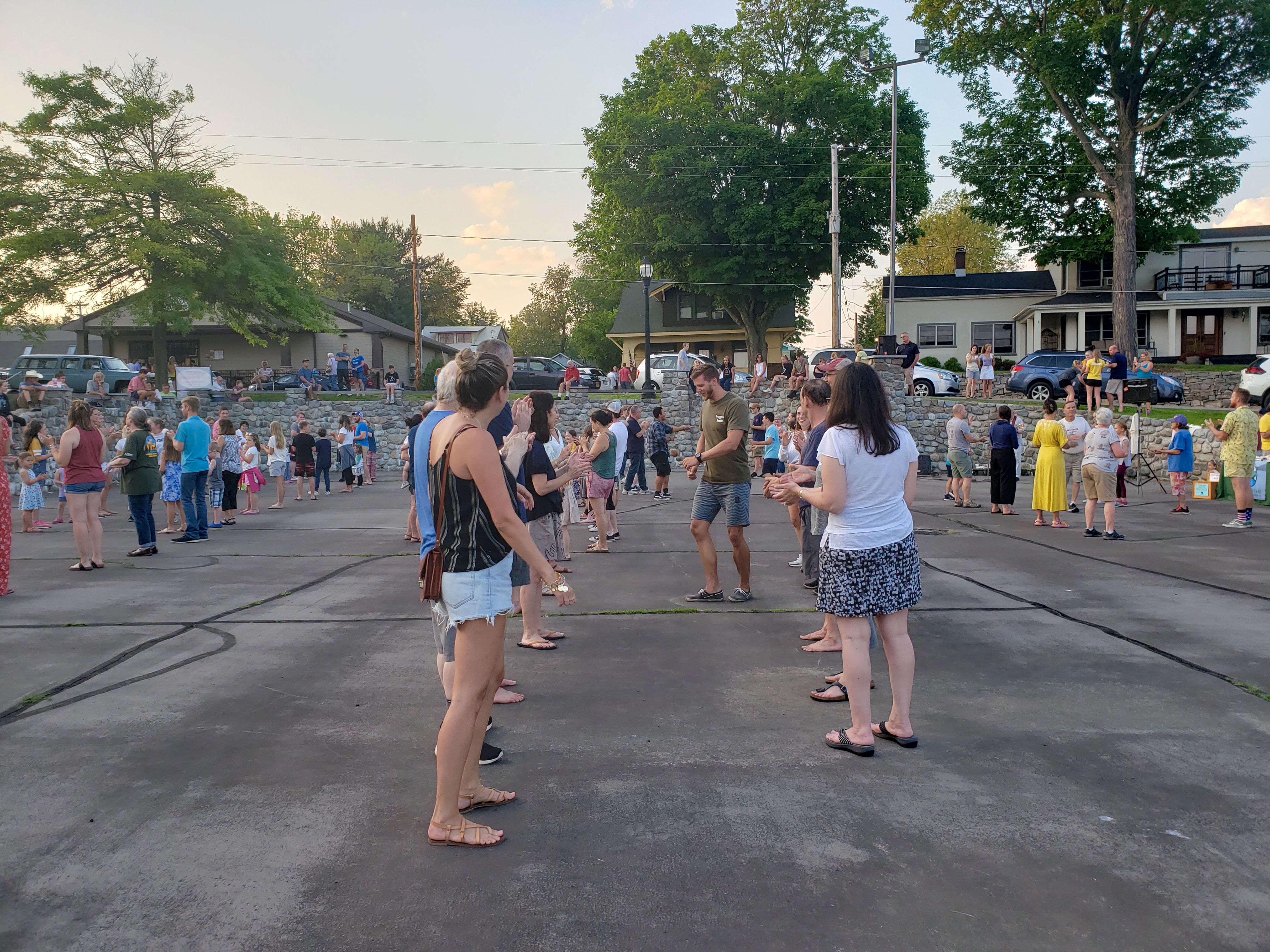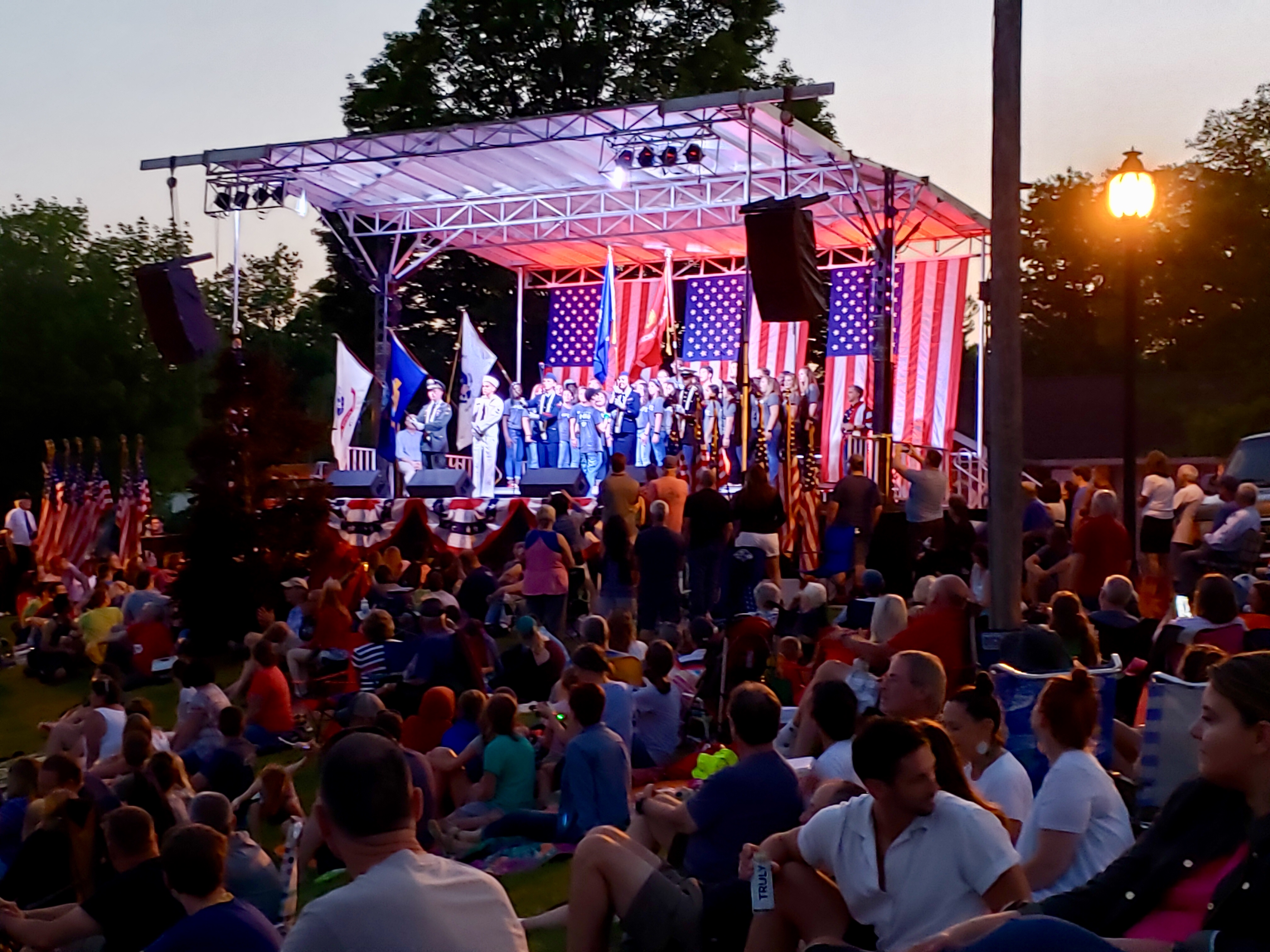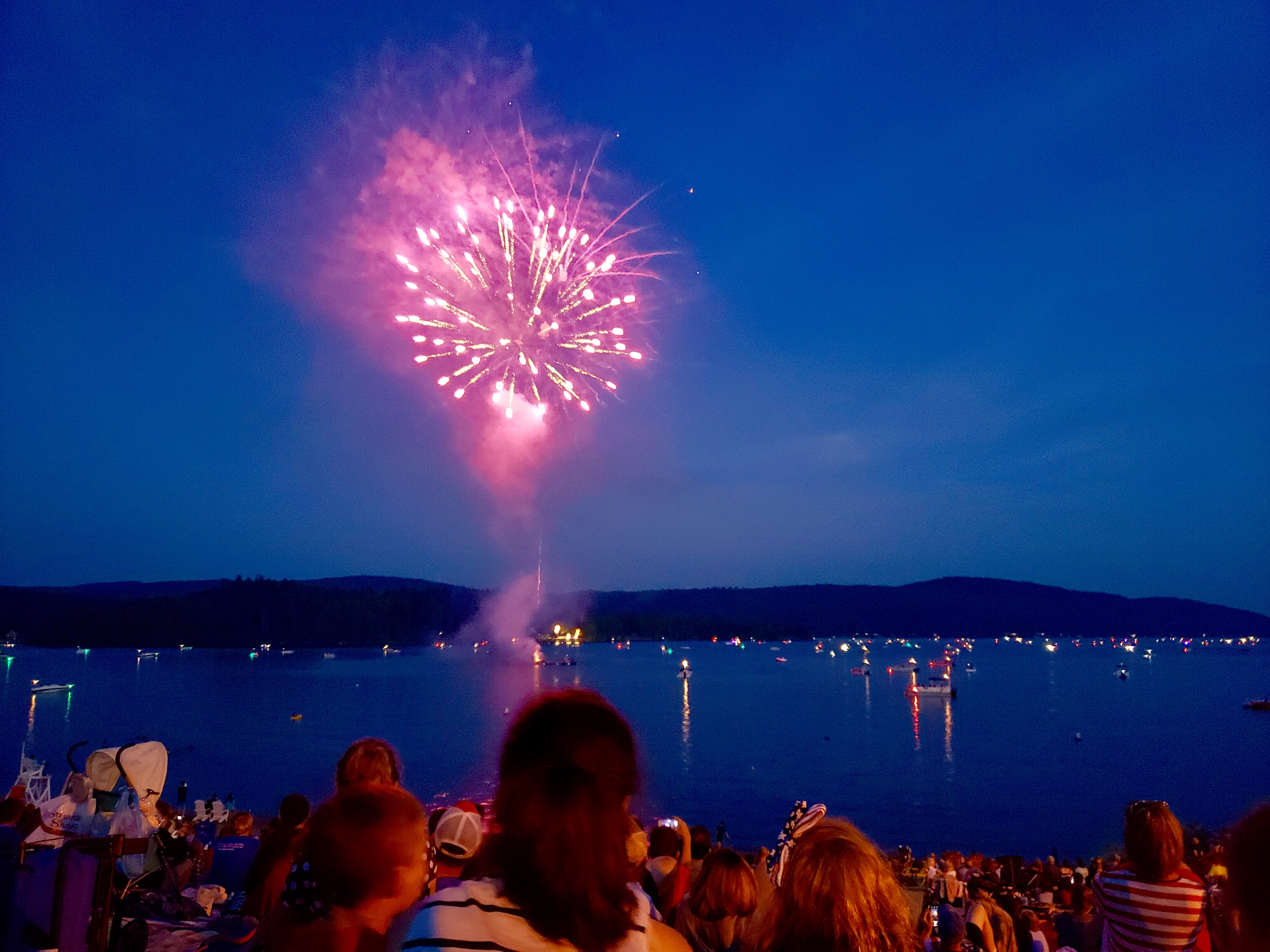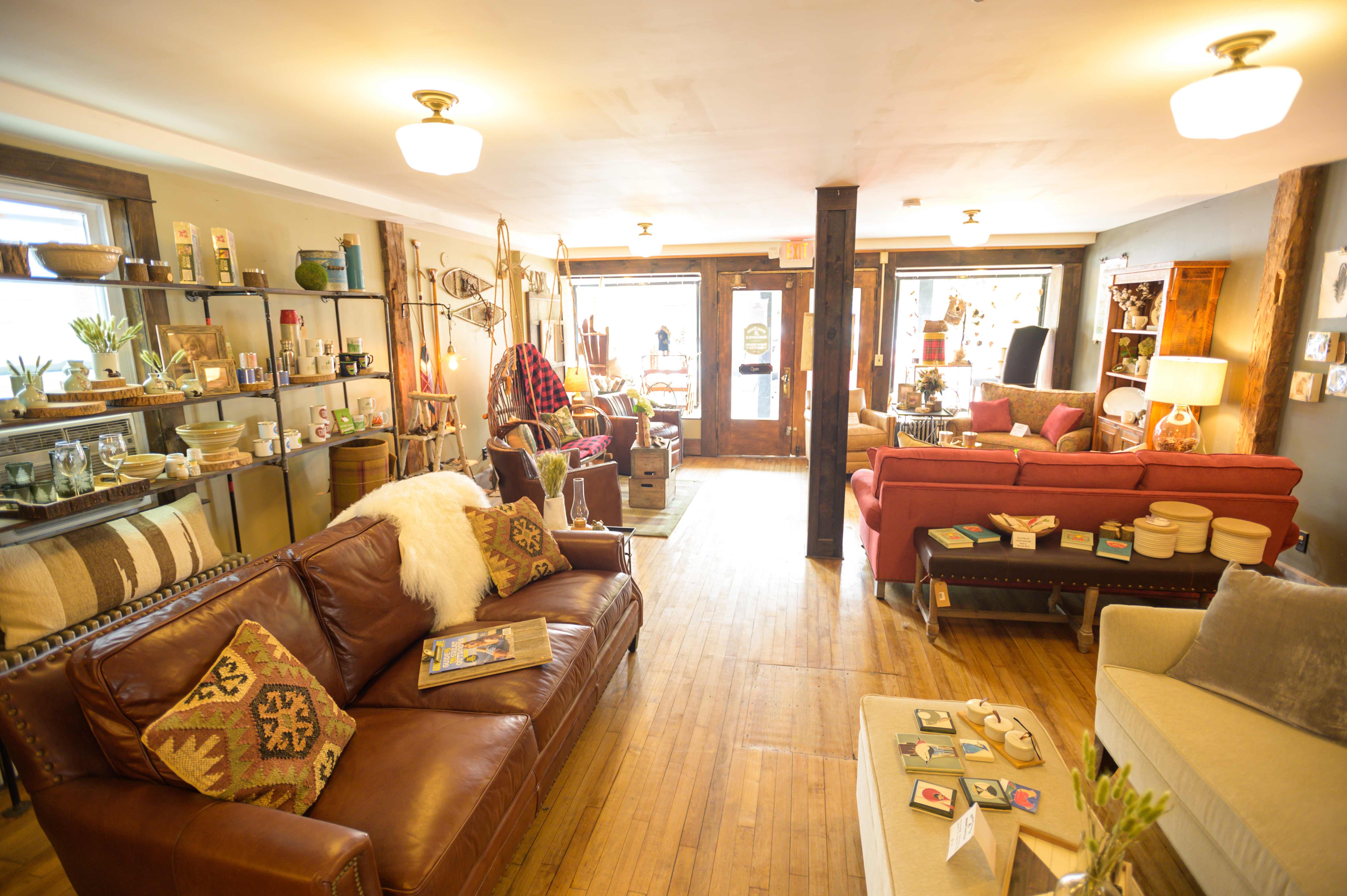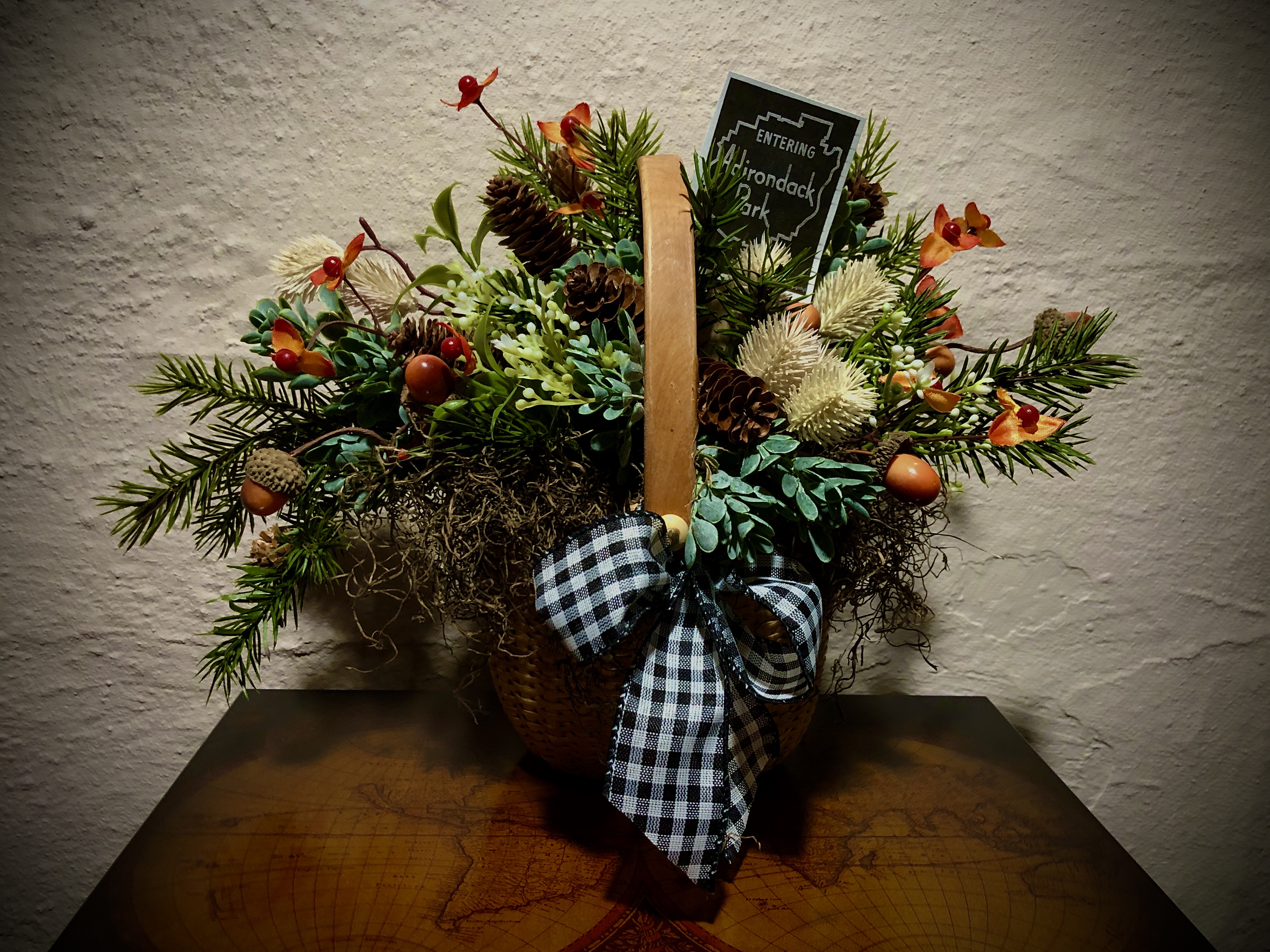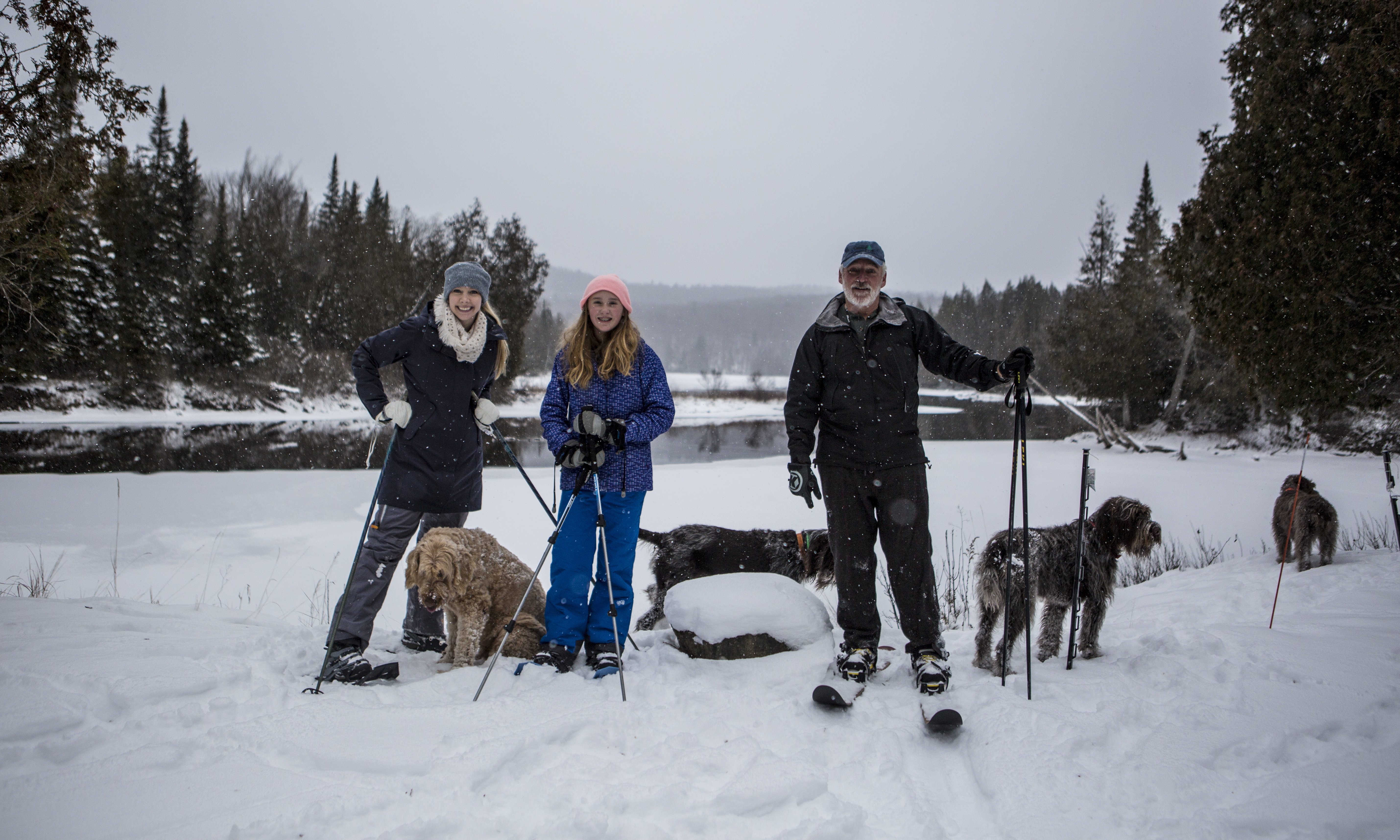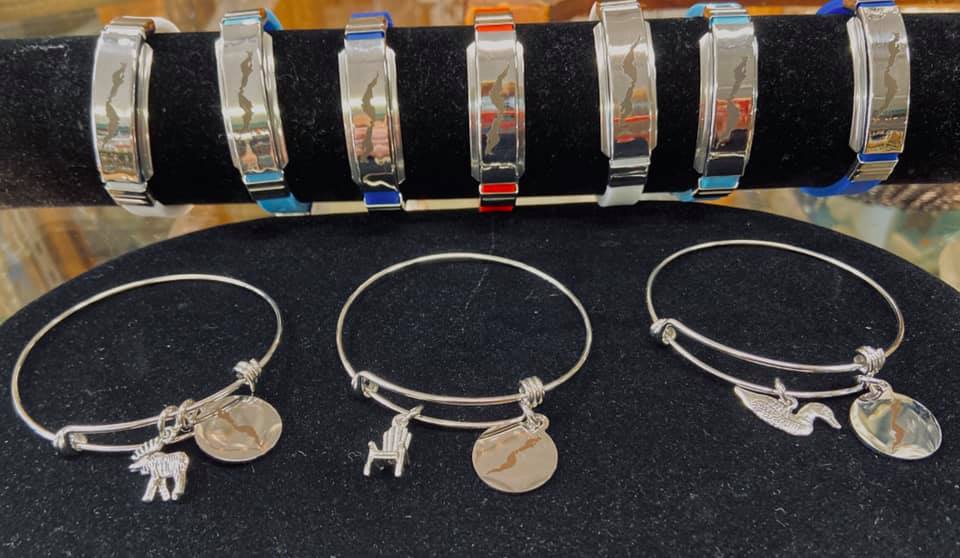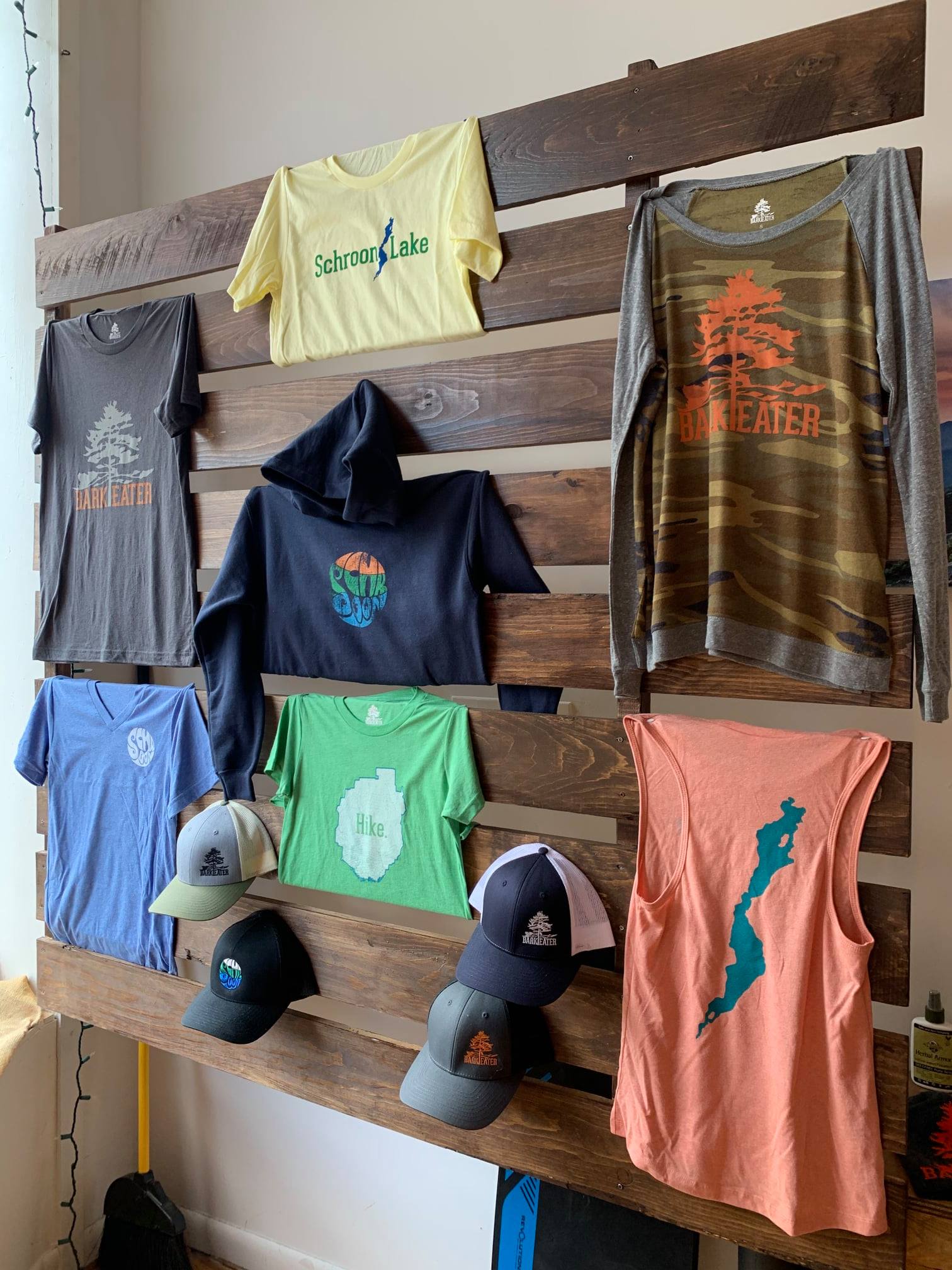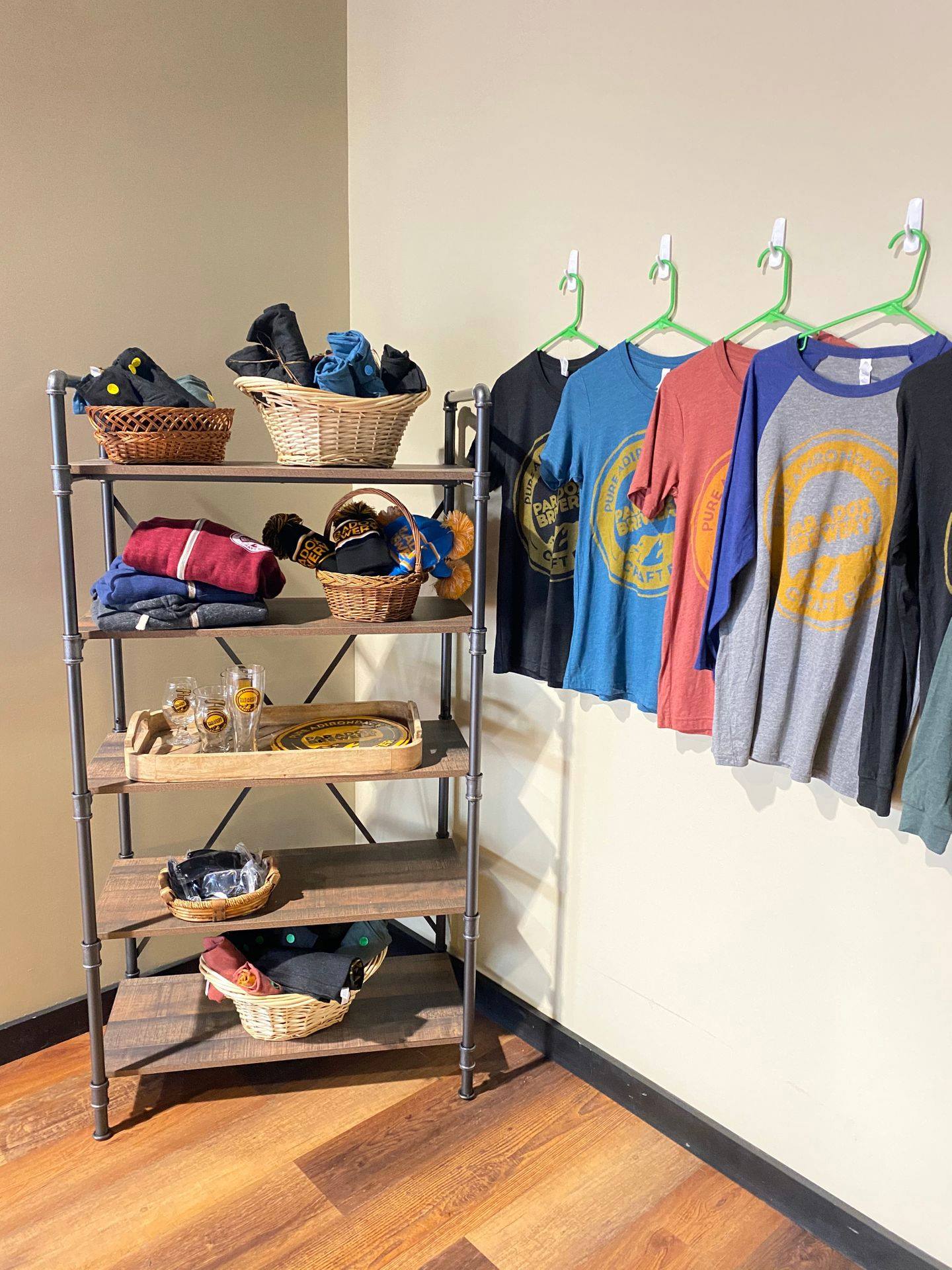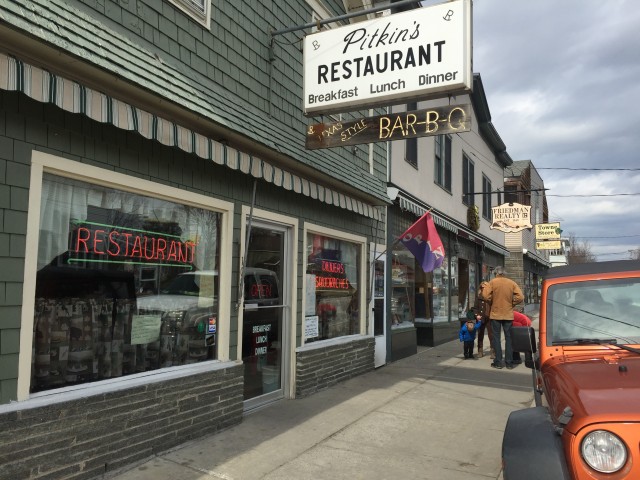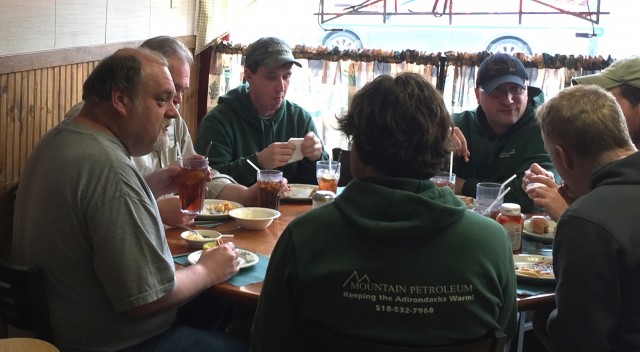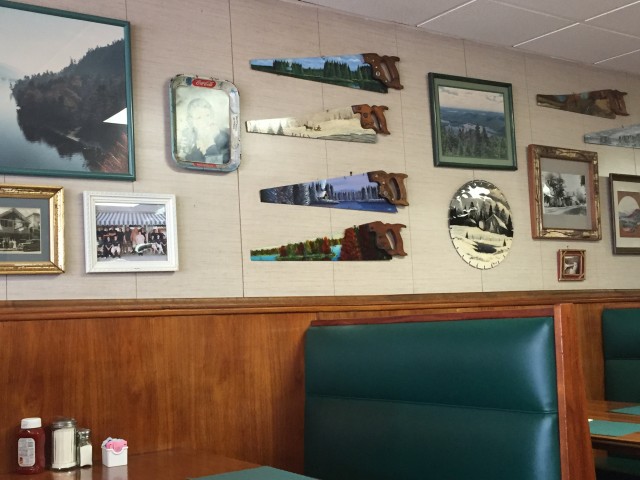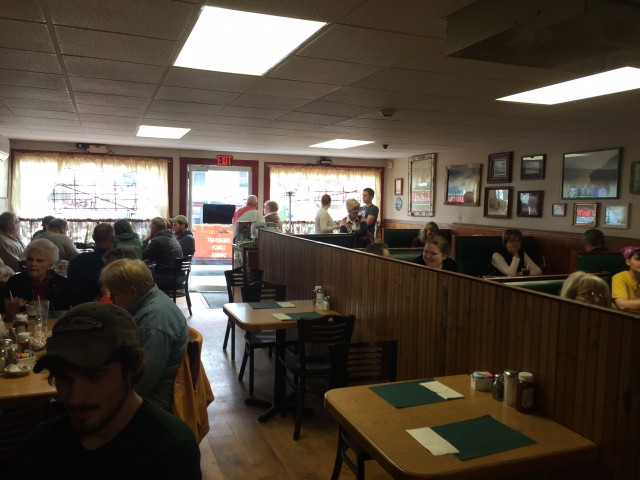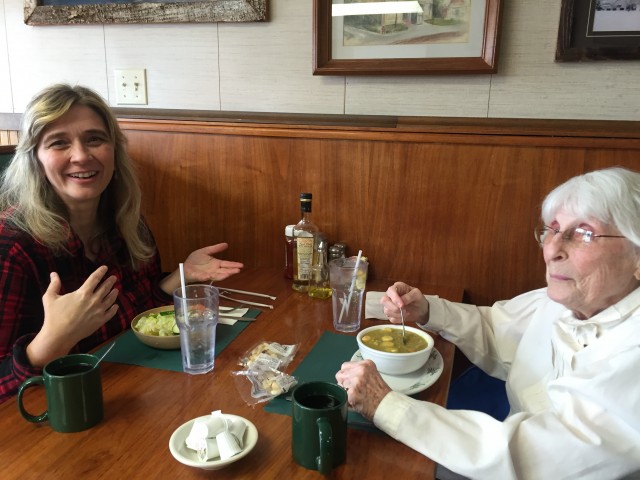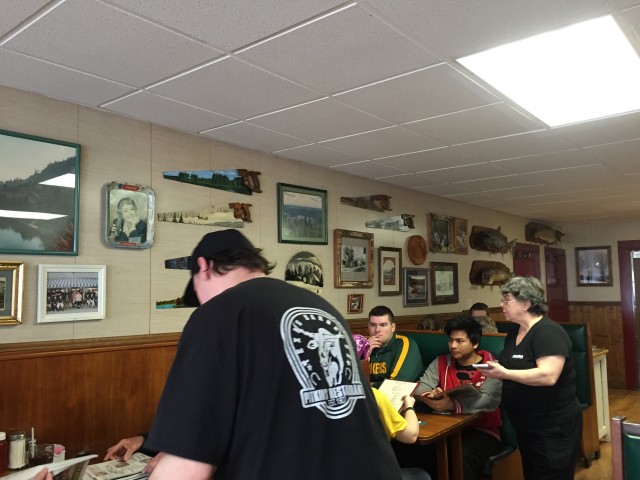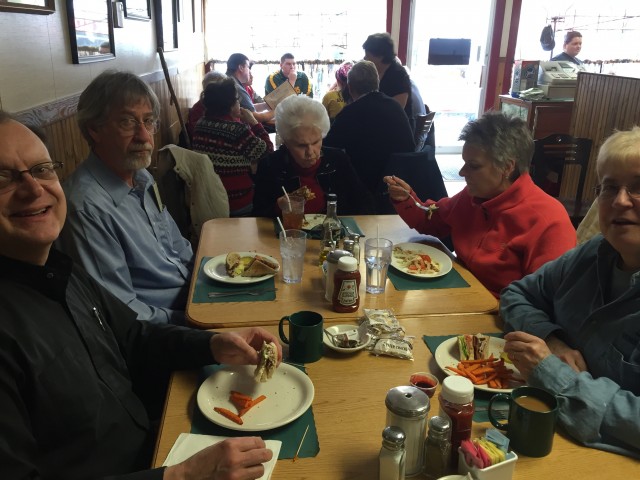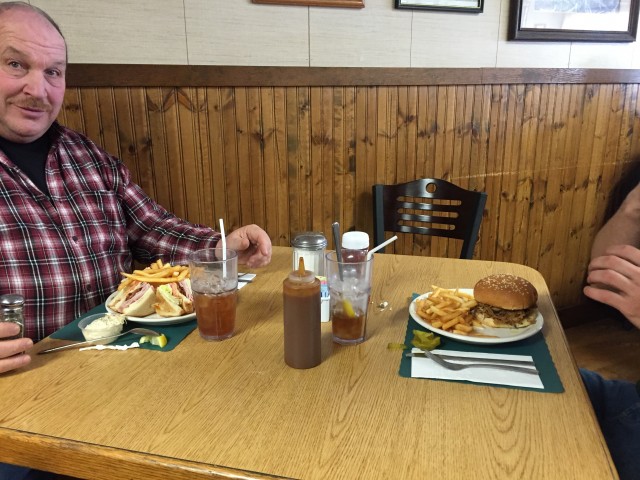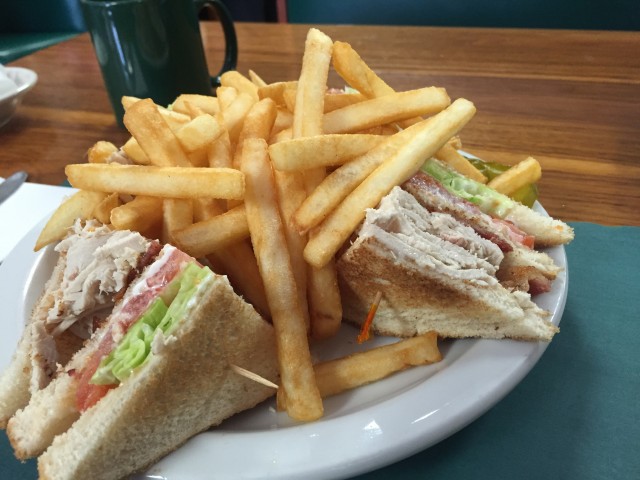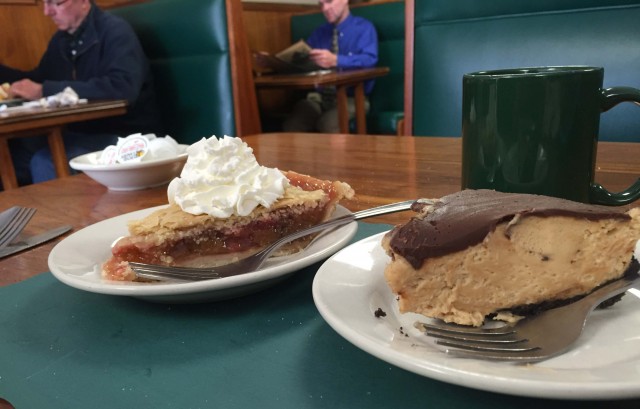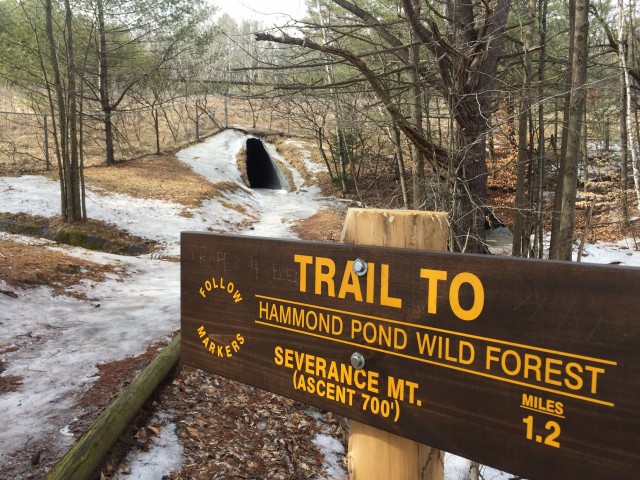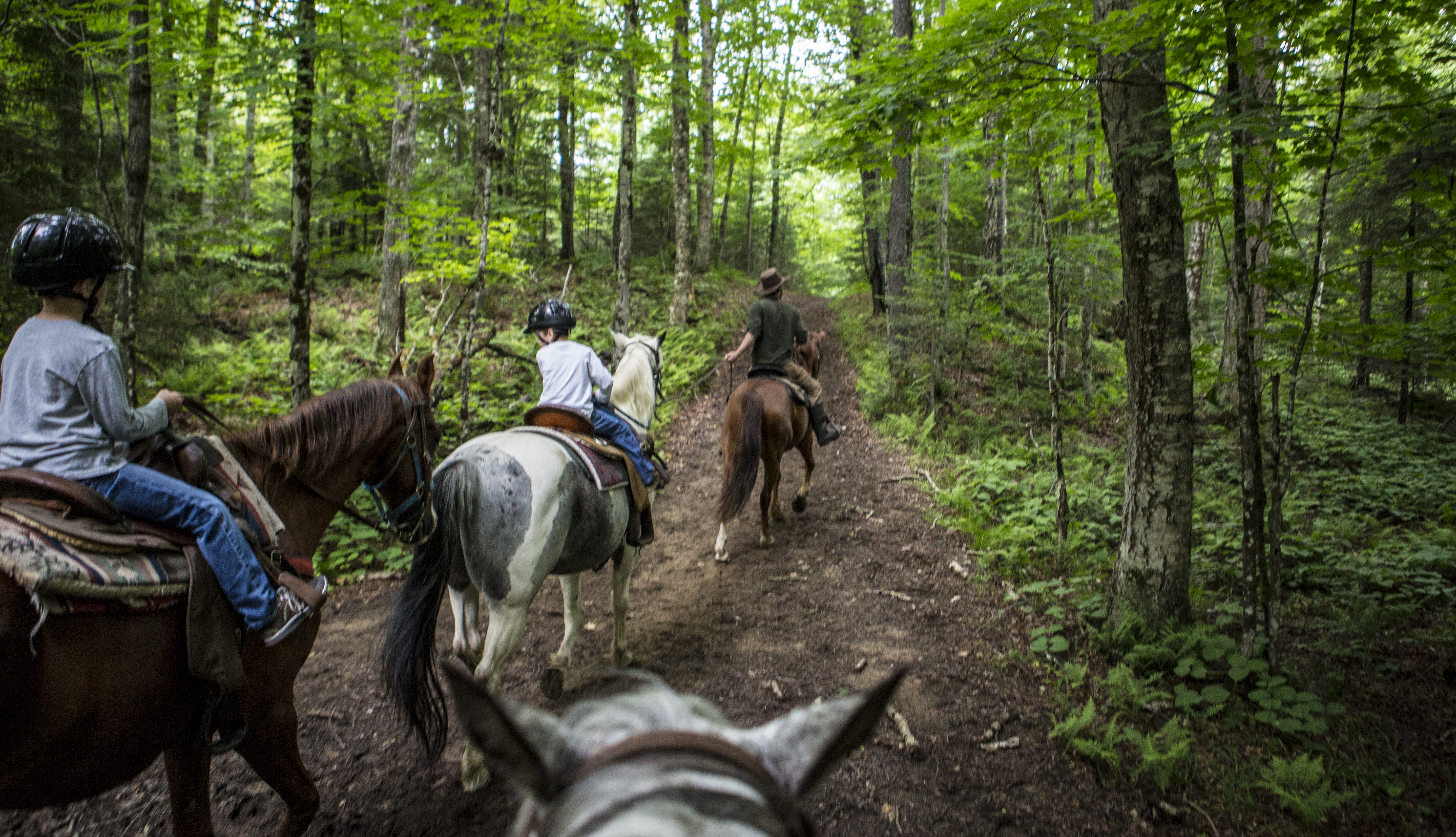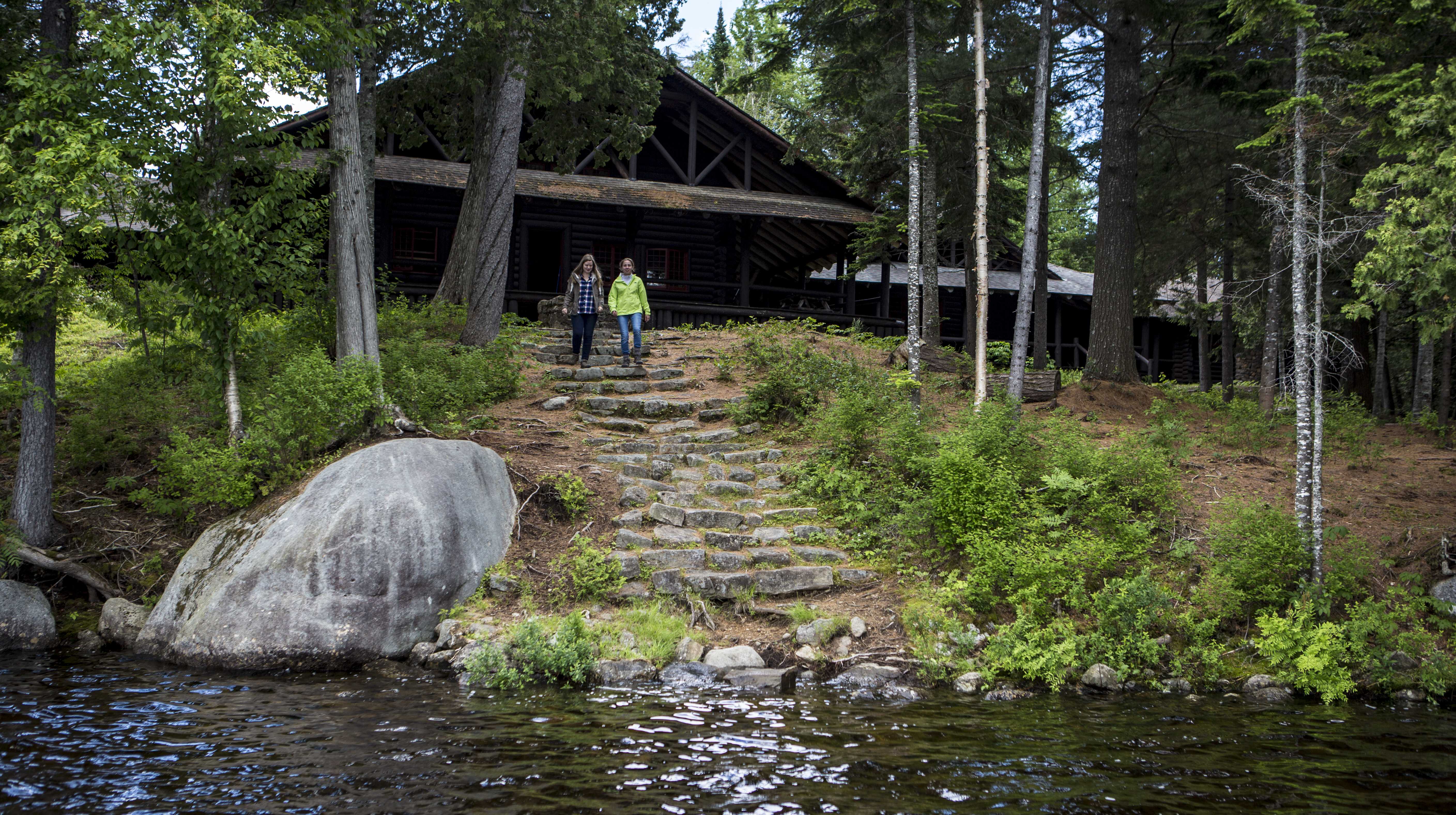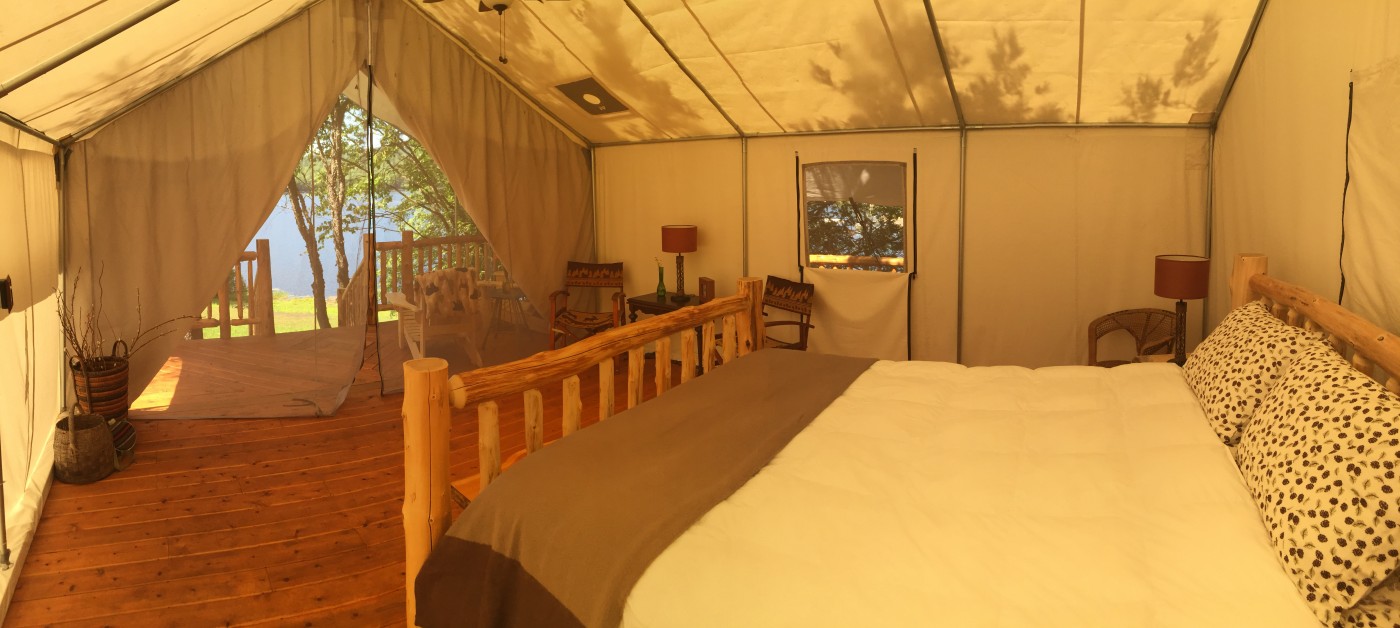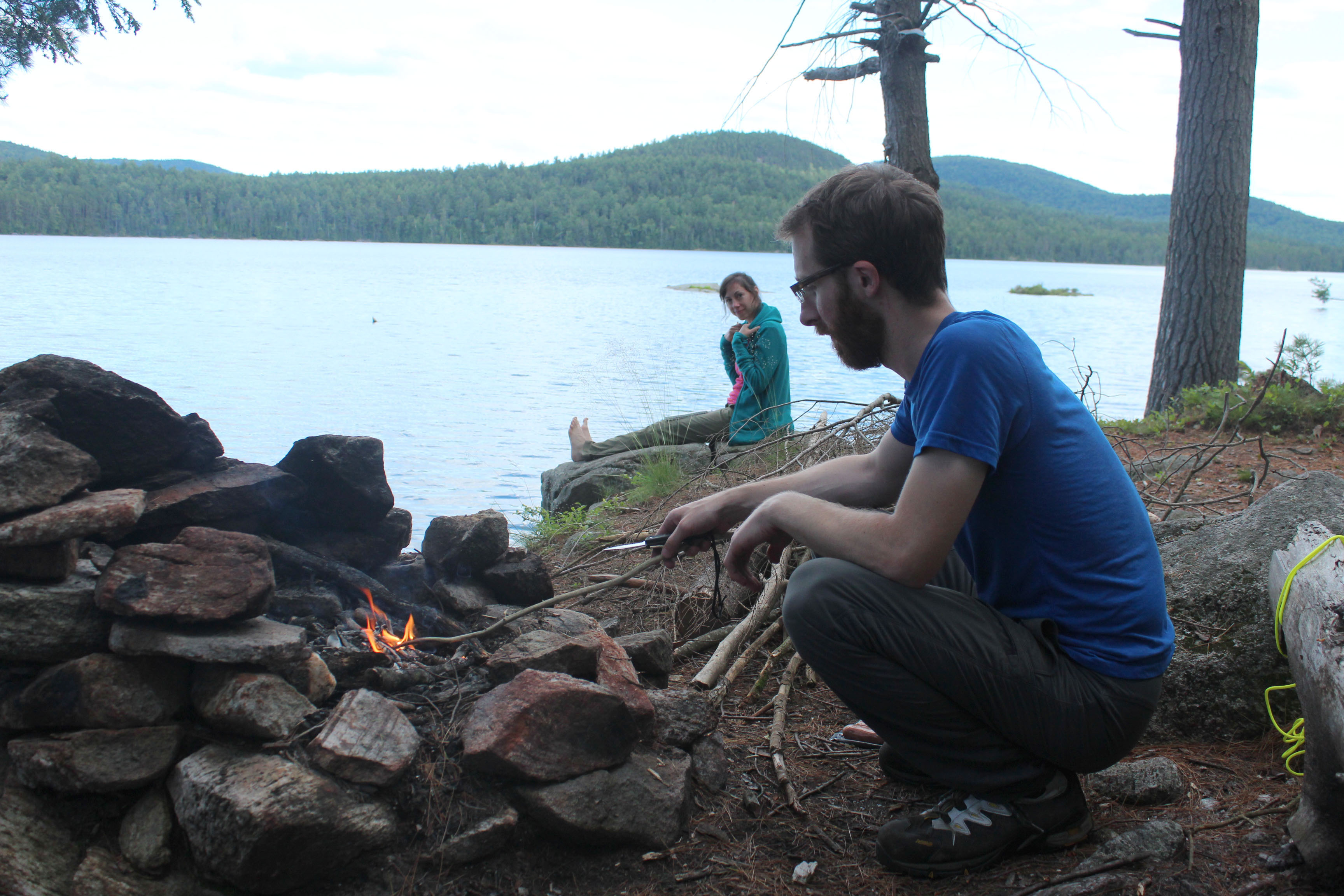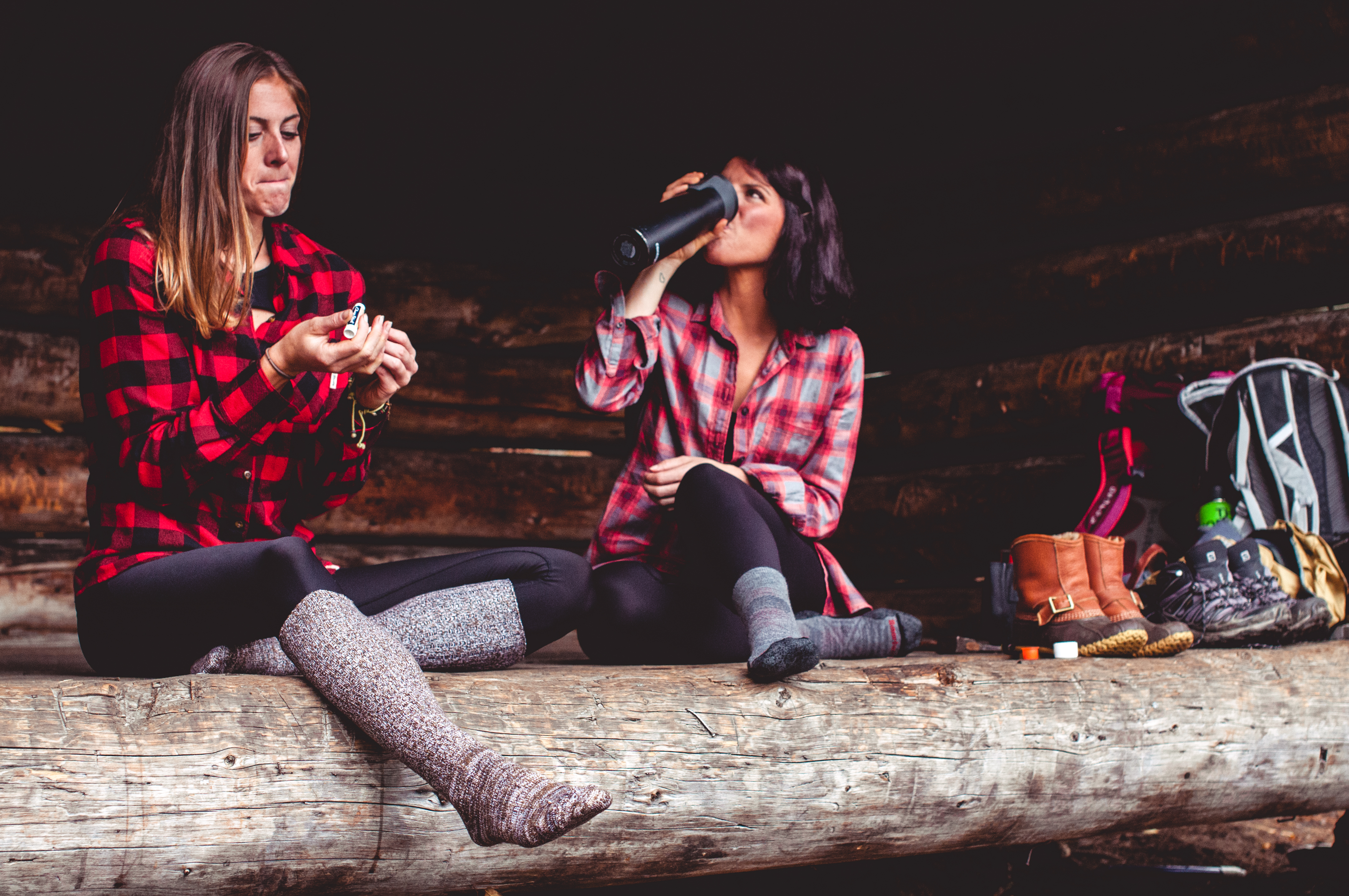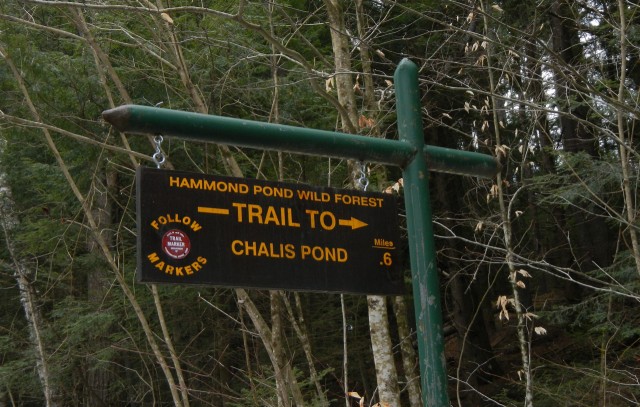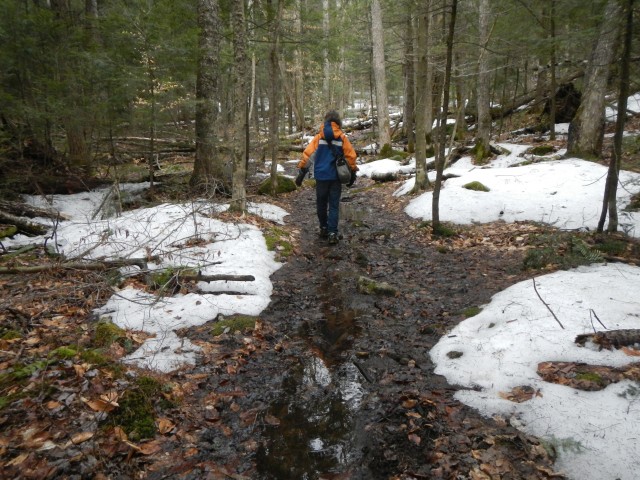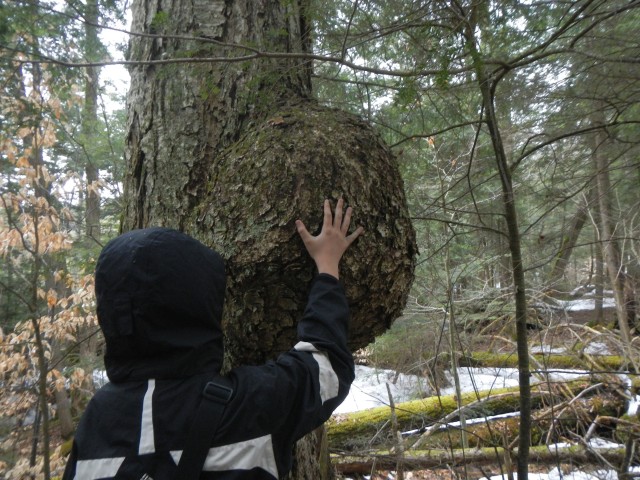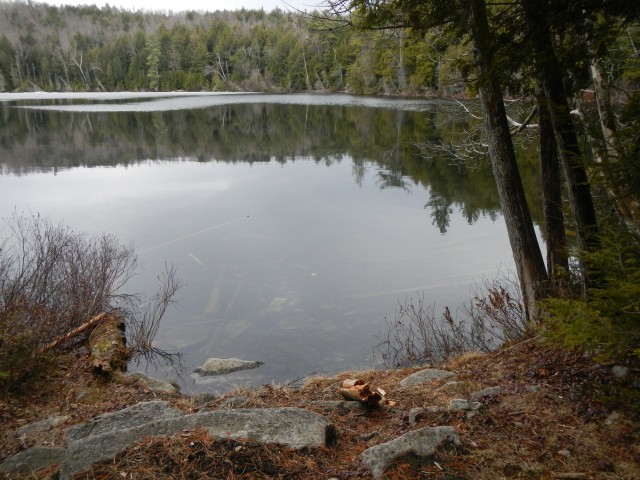The moving village of Tahawus
Did you know there was an entire Adirondack village that was up and moved about 12 miles down the road in 1963?
The village of Tahawus (pronounced tuh-HAWS, not tah-HA-wuss!) was built in the early 1940s around a mining operation. It was the middle of World War II, and the titanium there was very valuable. MacIntyre Development built housing for 180 families and 160 single men, plus other accommodations like a school, fire department, and a YMCA with a bowling alley, movie theater, barber shop, coffee shop and other features.
A whole generation of children was raised at Tahawus, but in 1963, the company discovered that the village sat on another site rich in iron ore and titanium. So in order to mine that site, the company had to pick up the village and move it to the tiny logging town of Newcomb.
The big move
A large area of former Finch, Pruyn land in Newcomb was cleared in 1962, and utilities were installed to connect the houses to. In 1963, MacIntyre Development started moving buildings. They would jack them up, back the flatbeds of large trucks underneath, then drive them right on down the road to Newcomb. Most of the buildings were so wide that roads had to be closed in order to make room for them.
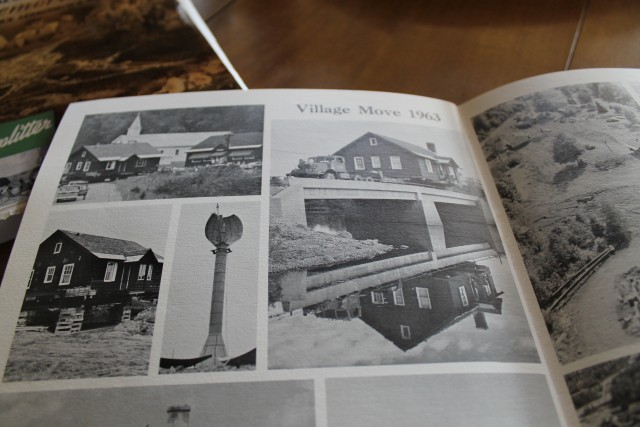
By the end of 1963, 87 houses, two churches, one store and five apartment buildings had been moved to what was first called “The Development,” but became known as Winebrook Hills. The company had owned the homes before, but when they were moved, residents were allowed to buy their houses.
The move basically doubled the size of Newcomb. A town that once had one store now had two; where once there was one church, now there were three. Lana Fennessy, who helps run the Newcomb Historical Society, was 7 years old when the move happened, and she said it didn’t affect life in Newcomb much for her, except that all her friends that used to be farther away now lived closer.
The YMCA was almost the only thing not mining related that didn’t move - it was a large, concrete structure, so it couldn’t be lifted up and transported like the smaller houses and churches. The loss of the YMCA had a big impact on the feel of the community, because it had been such a gathering place.
The mining operation
MacIntyre Development had drawn in a number of workers from Canada and outside of the area, but there were plenty of people from around Newcomb who worked there as well. Long Laker Jim McIntyre worked at Tahawus for 37 and a half years, from 18 to 55, and he left in 1988, the year before the operation shut down.
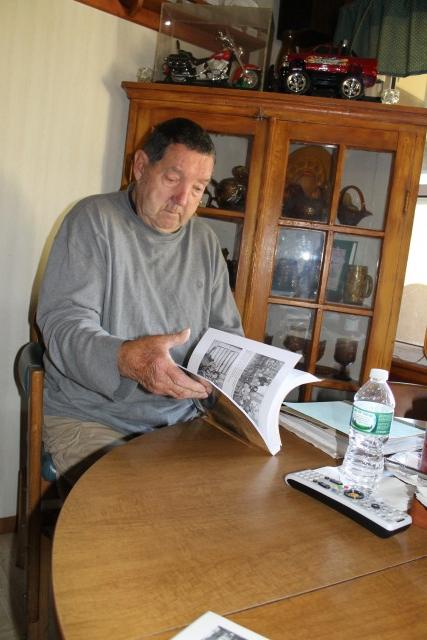
Jim lived in a bunkhouse at Tahawus one year, but the rest of the time, he commuted from Long Lake. He said the village there had a strong community feel - all the parents would take care of one another kids. It was like one big family.
He worked in the mill where titanium was separated from the ore, crushed and dried. The work was hard, and it wasn’t always fun. He and his colleagues were covered in iron ore soot all day, and when they came home, they might as well have worked in a coal mine, because they were covered in black from head to toe.
But it was a good place to work. The pay and benefits were good, there was plenty of work when the company was doing well, and there were doctors and nurses there when workers were ill or hurt.
“People made a living,” Jim said.
At one time, there were around 500 people working with him, but in the ’70s, the company went the way of many others of the time and automated much of their operation. Where at one time there used to be 15 people working one shift, there were three people on a shift toward the end.
He told me it’s hard to describe how big the plant was at Tahawus, especially now that there is so little there. No one who didn’t see it would ever understand the scale of it. He has been there since, and he can’t believe there are now trees and other wildlife where there was once a huge mining operation.
“It’s so hard to believe that - like where all the trees are coming up - the plant was there,” Jim said. “There’s just a lot of history there.”
Hey, look over there!
But whatever you do, do not try to go there yourself to check it out without permission. It’s dangerous! For the last two years, Paul Mitchell’s logging company from Tupper Lake has been running a separate stone crushing operation at Tahawus, and there are large trucks and machines all over the place. A worker I spoke with there told me that every time someone writes about the fact that there was a village there, they have to shoo people away for days afterward, but I know none of you will do that, right?
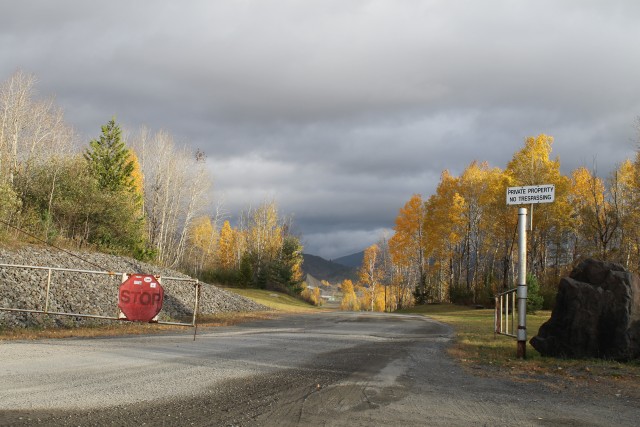
There’s nothing there to see, anyway! Just a few buildings and a huge pile of stone.
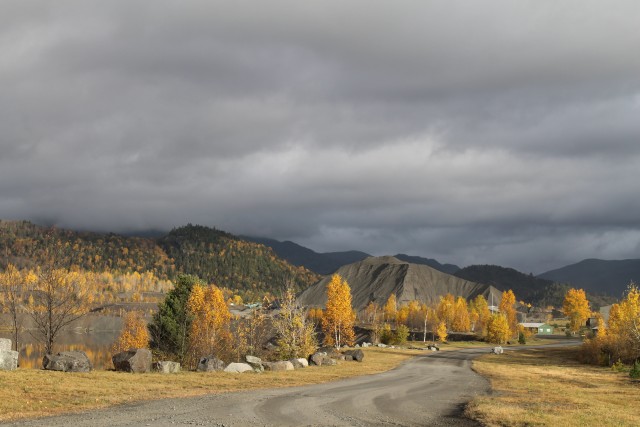
Luckily, there are some other very cool things nearby! On the road down to Tahawus (a turn off the Blue Ridge Road right before you get to the intersection with 28N in Newcomb), about a half-mile to a mile before you get to the end of the road, there’s a turn-off to the left - take it! There are a whole slew of trailheads there open for all kinds of wilderness recreation, but that’s not all.
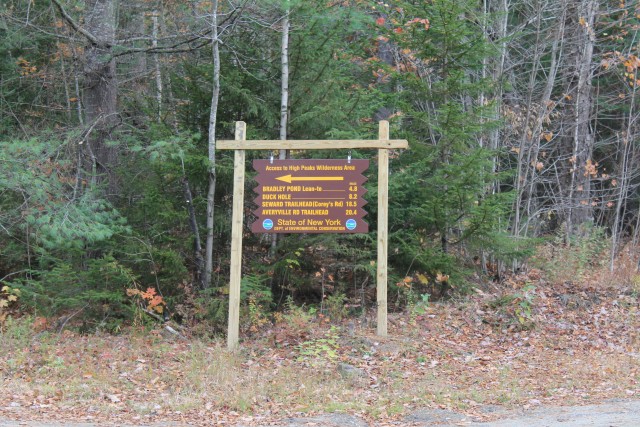
There’s also a super super cool old blast furnace, also used in mining iron ore. It was one of the previous iron ore mining operations before companies knew that the titanium in iron ore could be more useful than the iron itself. It was only used for three years - 1854-1857 - but much of it is still well preserved, and the Open Space Institute has installed signs all around the site to teach visitors about the furnace and how it was used.
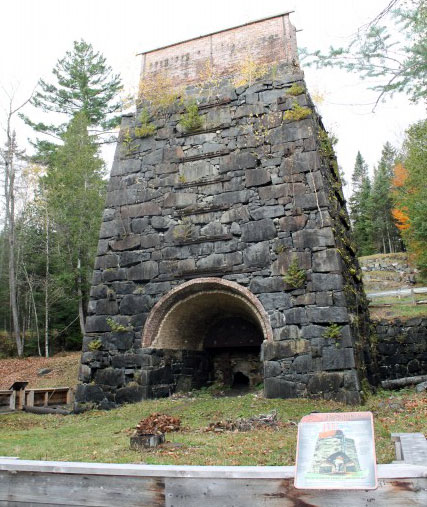
A little on down the road, there is also another mining town called Adirondac. Rather than being moved, this one was abandoned, and the few houses there were left to ruin. One of the buildings, though, the MacNaughton Cottage, is in the process of being preserved. It’s boarded up but recently painted, and there is an Open Space Institute sign nearby telling visitors about it and the town.
The MacNaughton Cottage isn’t just any cottage - it’s where Theodore Roosevelt was vacationing in 1901 when he found out that President William McKinley was shot, and it was from there that he began his trip to North Creek and then Buffalo to take over as president of the U.S.
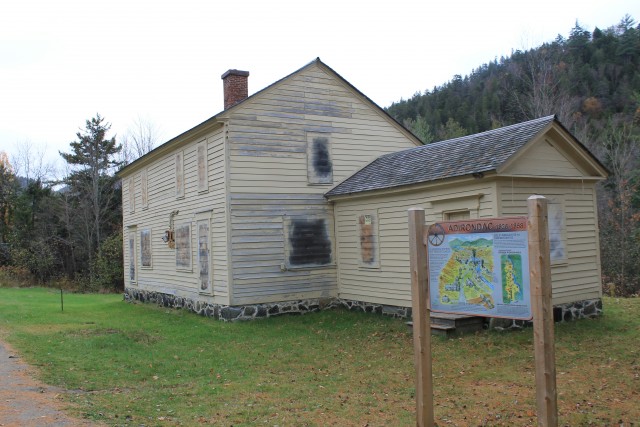
Learning more!
If you want to learn more about Tahawus and see some real artifacts from the old village, stop by the Newcomb Historical Society building next to the town hall. They have some really cool stuff there, like a set of lockers that are still covered in iron and titanium dust, bowling pins and trophies from the bowling alley at the YMCA, and a T-shirt from the YMCA.
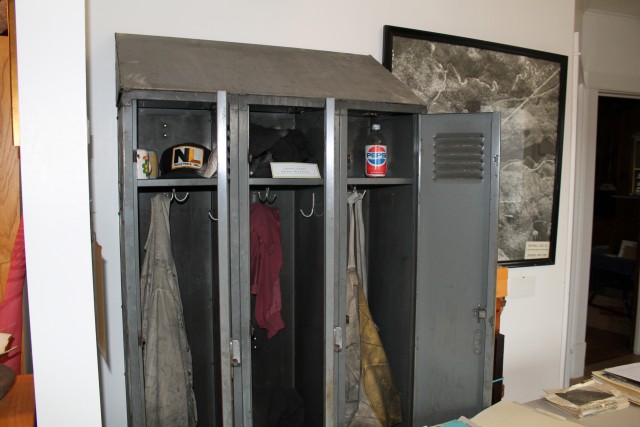
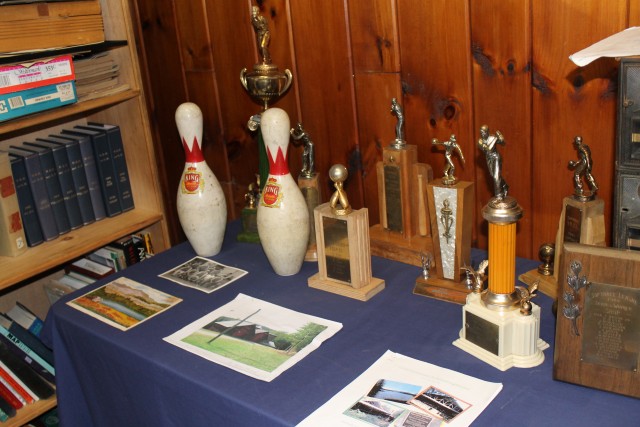
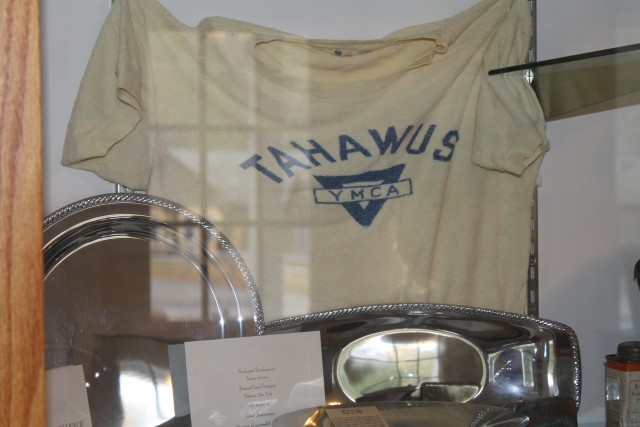
They also have a display of photos depicting houses being moved from Tahawus to Winebrook, and a video recording of two different news segments on Tahawus (with a bit on Adirondac, too).

You can also just take a drive down through Winebrook! Many of the buildings are still there, and only a handful have been built in between the ones that were moved there. You know those two churches that are one of the first things you see when you come into Newcomb? Those are the ones that were moved there, along with the store in between them, once called the Winebrook Market (now it’s W.D.’s Country Store).
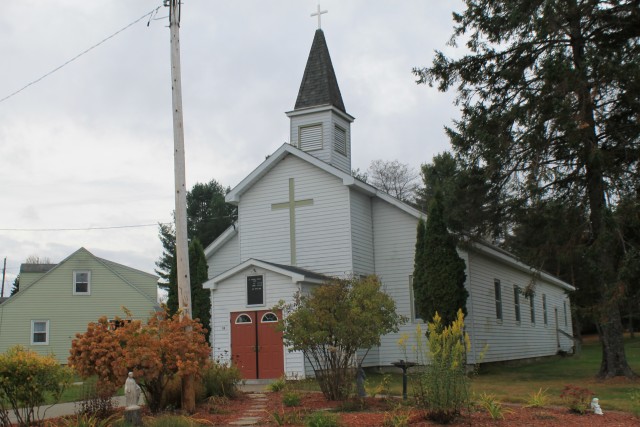
The houses as you drive down the road on Marcy Lane, Henderson Lane and Sanford Lane and throughout that neighborhood were mostly moved from Tahawus. Many still have the rough-cut wood siding that makes them identifiable as Tahawus houses, though some have updated their siding.
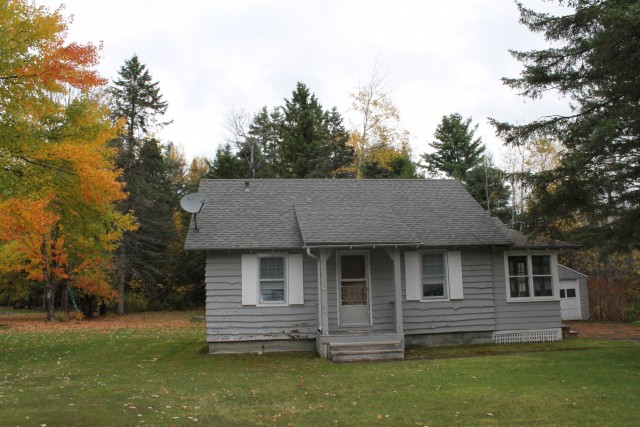
Lana told me that Winebrook Circle used to be referred to by locals as “Snob Circle,” because all the bigwigs lived there and had nicer houses than the rest.
If you’re interested in learning more about what it was like to live at Tahawus, Leonard Gereau recently released a great book about it called “Tahawus Memories 1941-1963: The story of a unique Adirondack hometown.” The book is for sale at many sites around Long Lake and Newcomb.
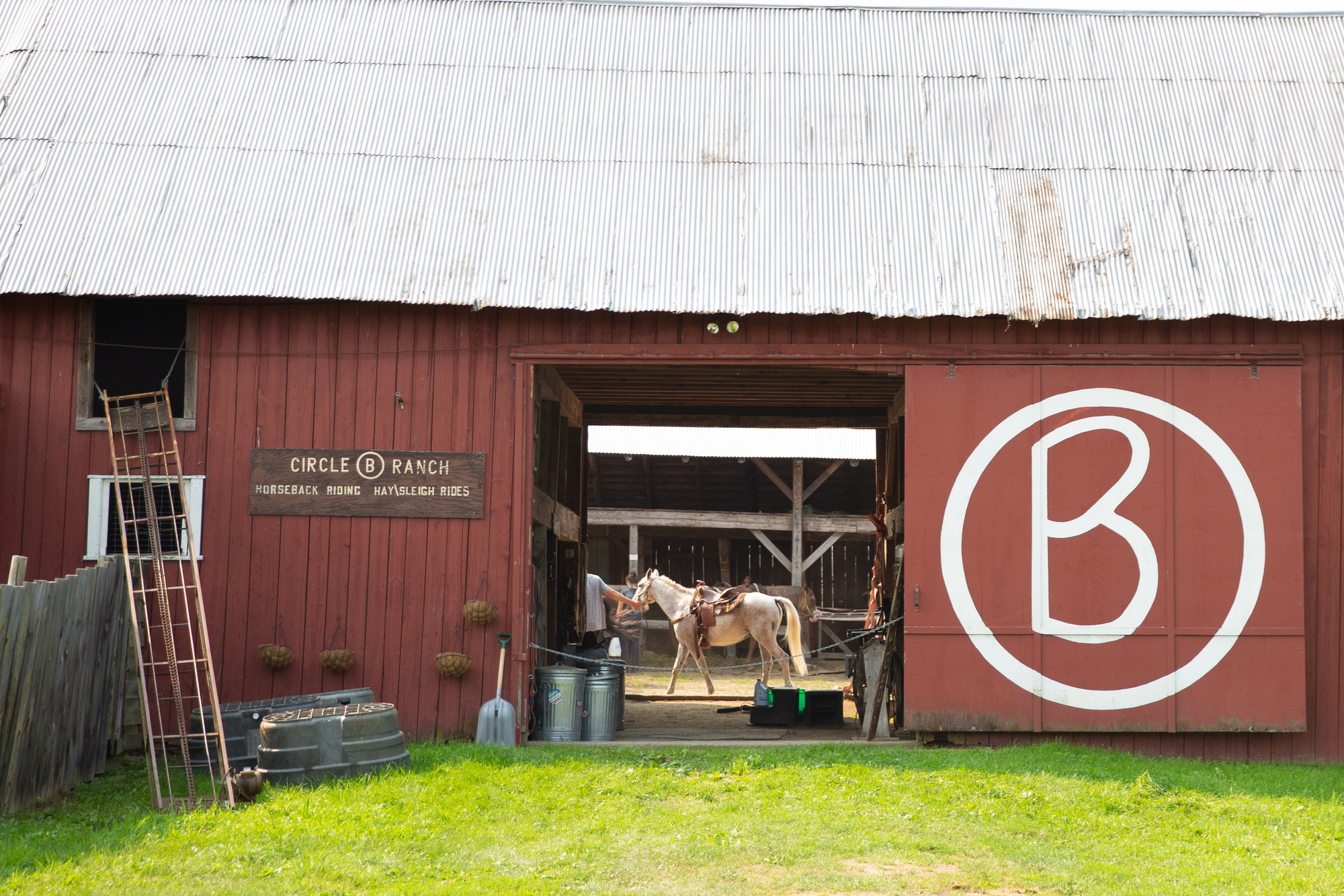
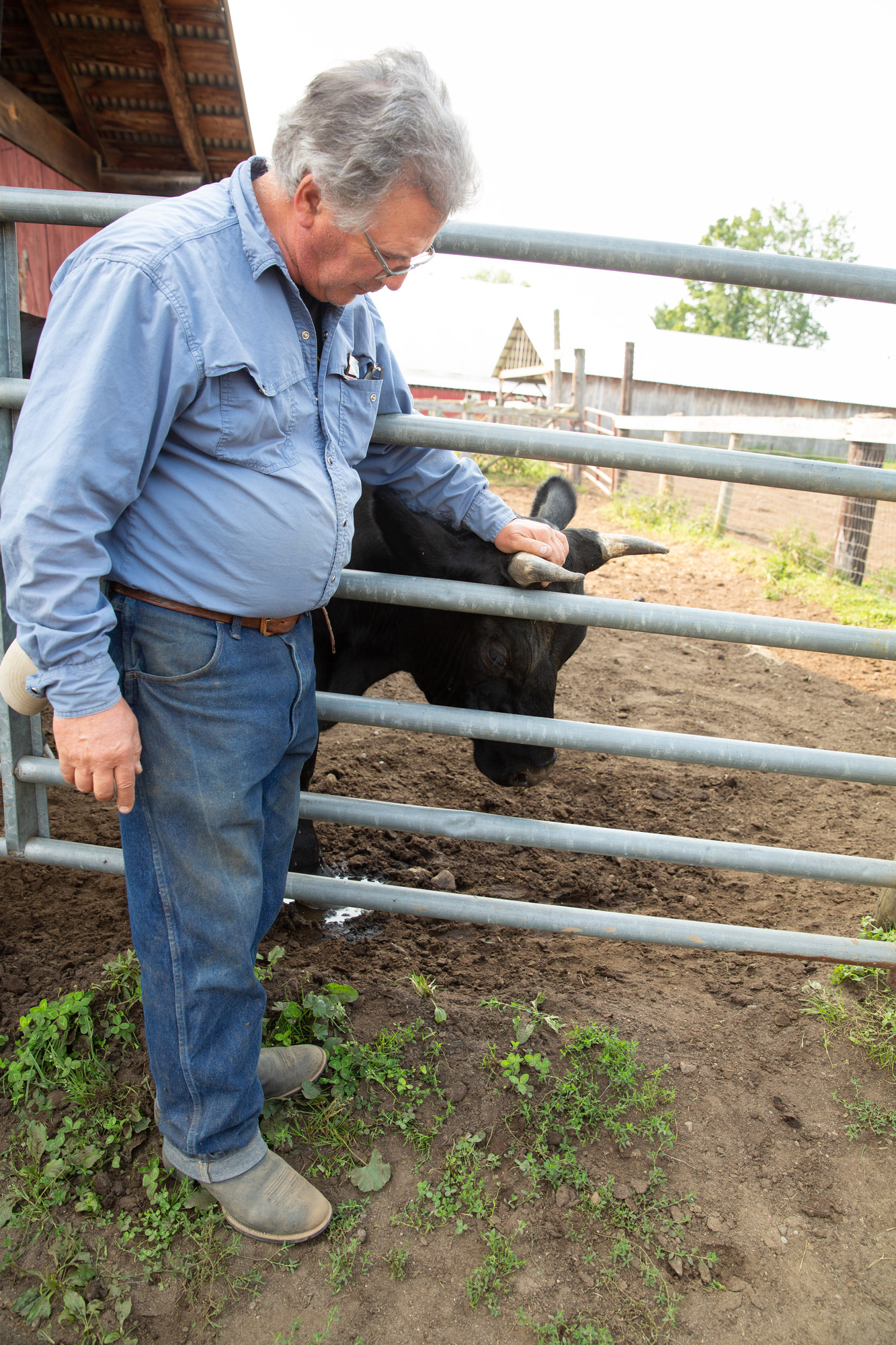

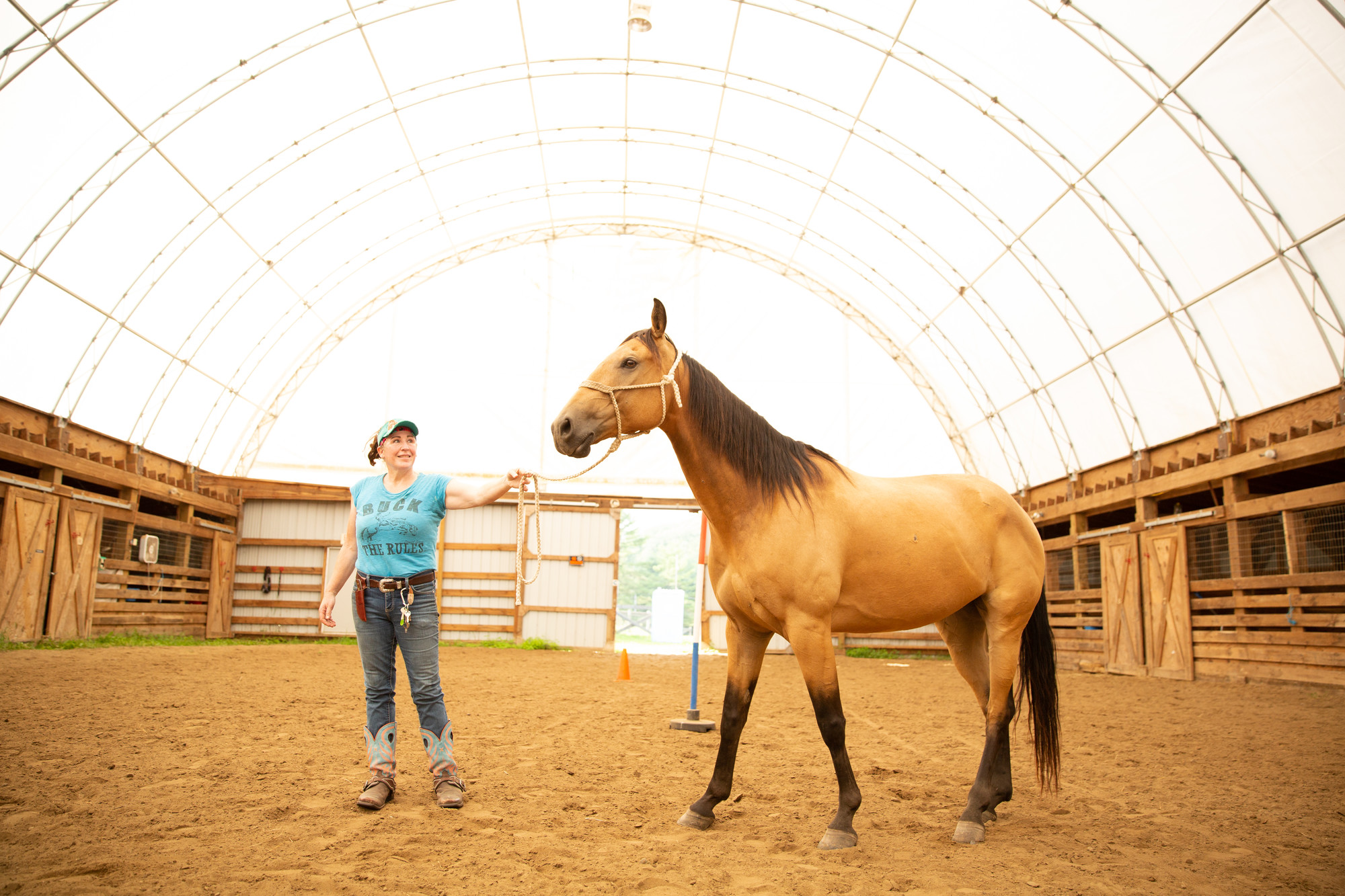
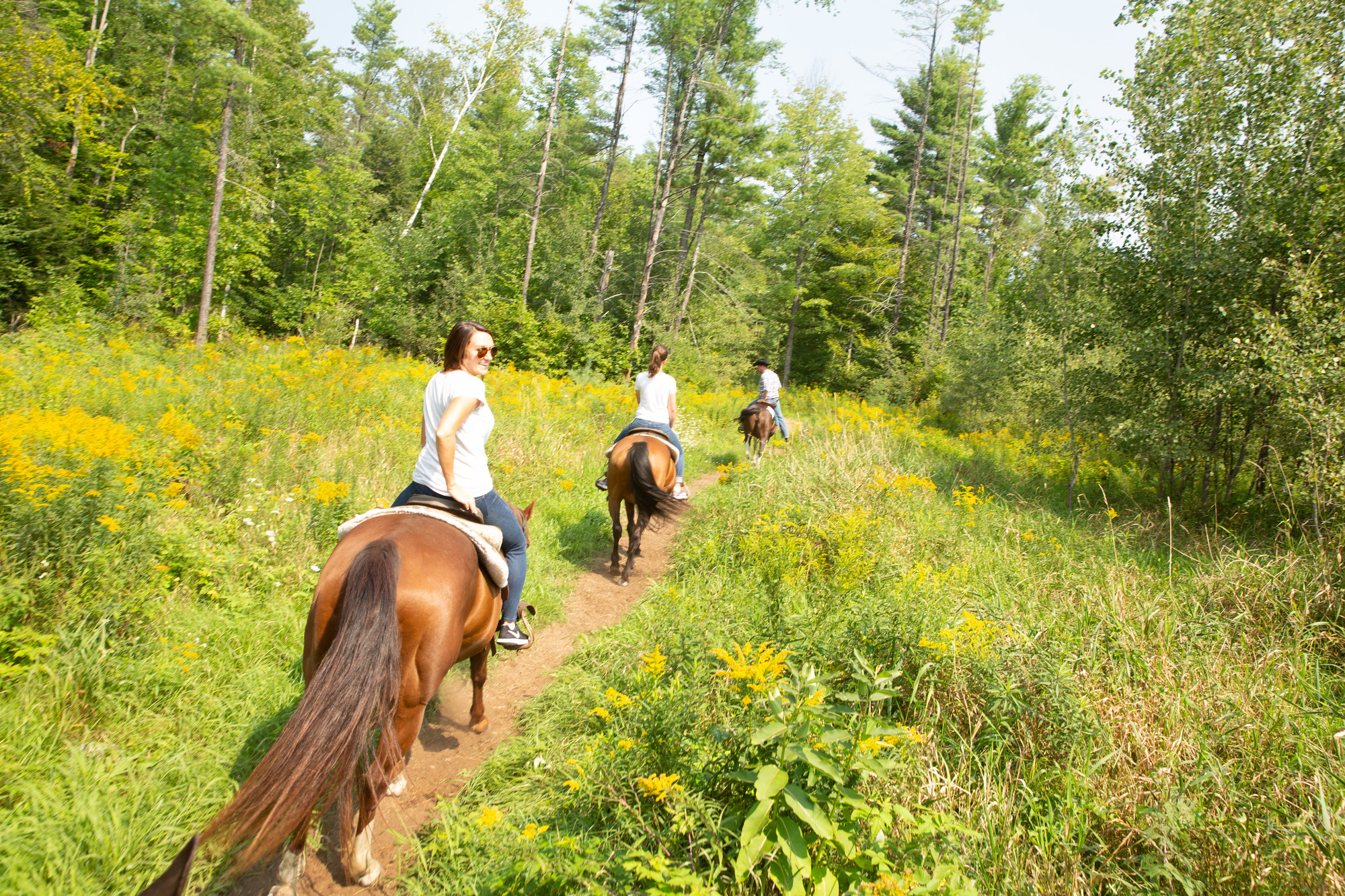
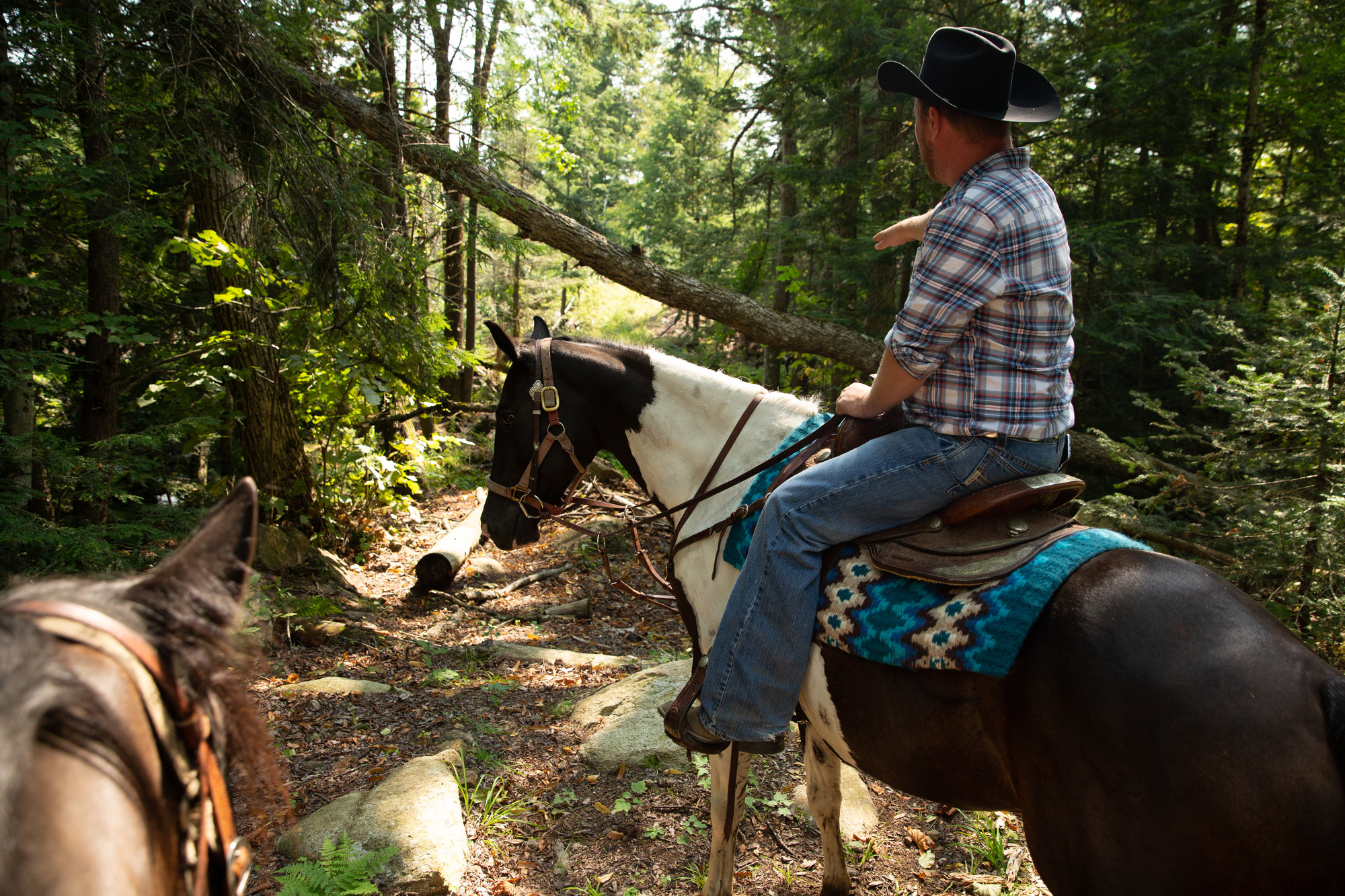
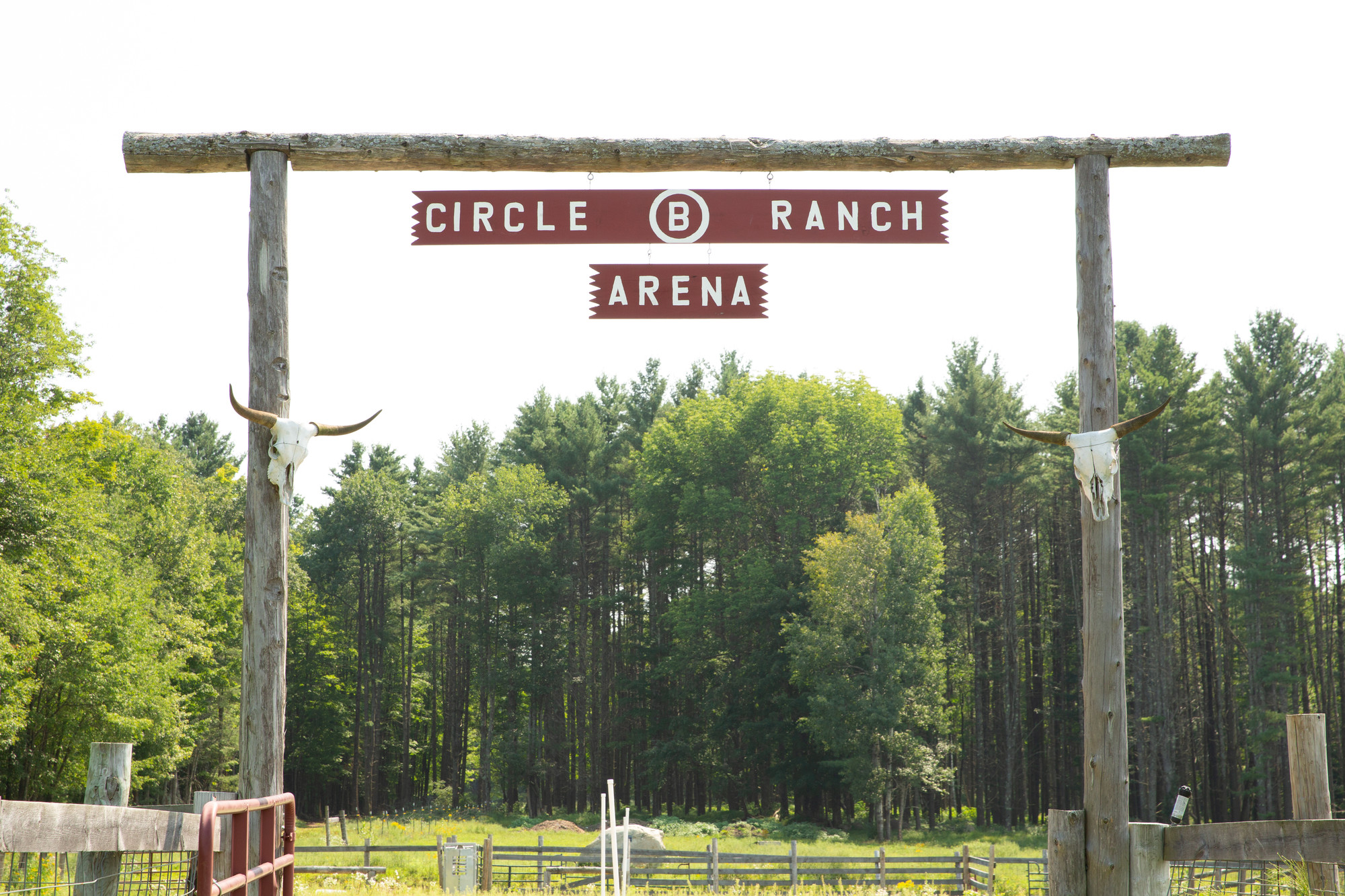
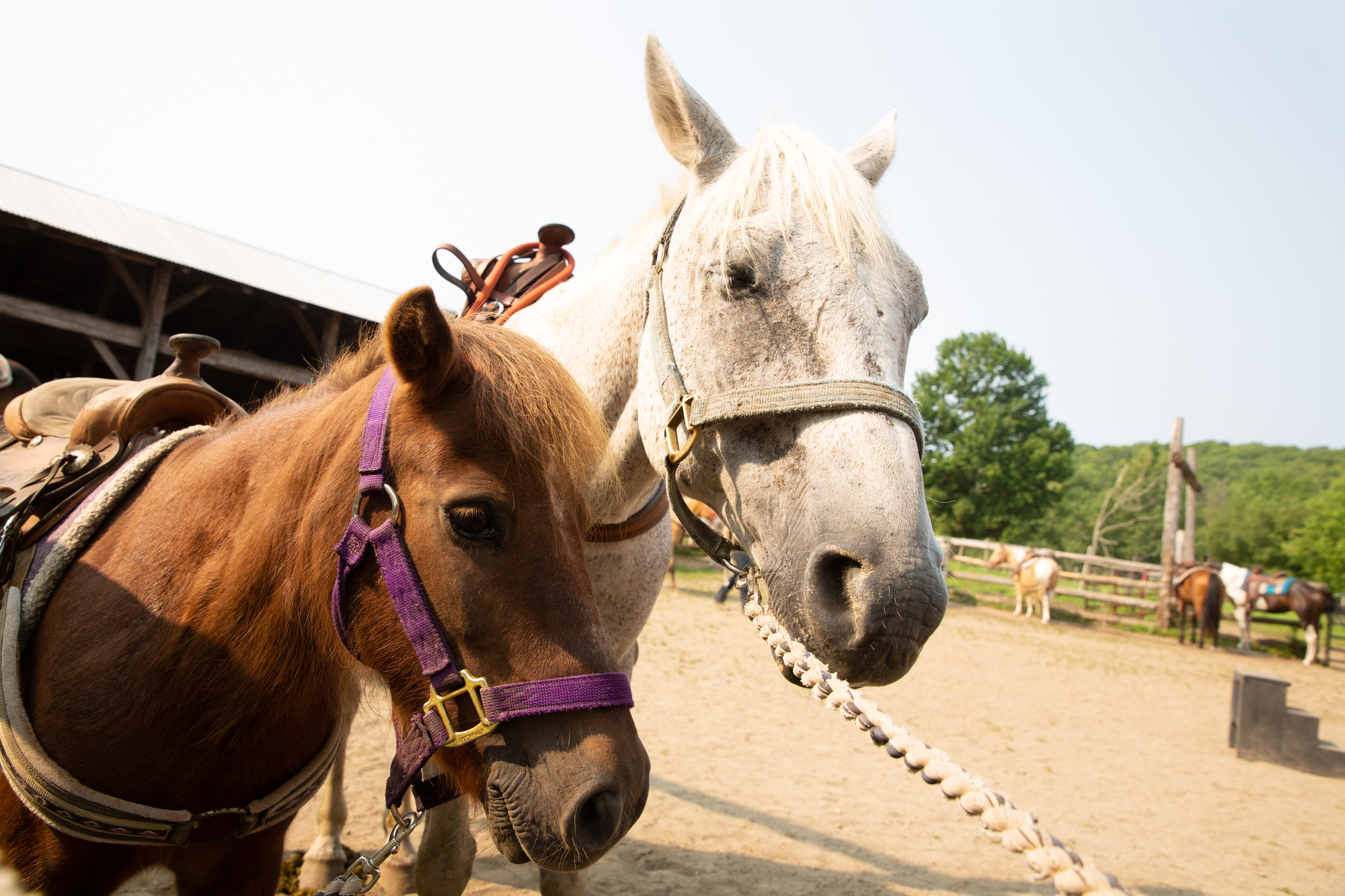 During my visit to Circle B, my ROOST co-workers and I went for a horseback ride through the trails. Sharon and Malcolm guided us. Sharon has been riding since she was 3 years old and Malcolm estimates that he’s been riding for about 30 years. Like all the guides at Circle B, they are experienced, caring, and committed to the horses. They are also passionate and talented riders to say the least. Most of them participate in competitions and have lifelong careers working with horses in different capacities.
During my visit to Circle B, my ROOST co-workers and I went for a horseback ride through the trails. Sharon and Malcolm guided us. Sharon has been riding since she was 3 years old and Malcolm estimates that he’s been riding for about 30 years. Like all the guides at Circle B, they are experienced, caring, and committed to the horses. They are also passionate and talented riders to say the least. Most of them participate in competitions and have lifelong careers working with horses in different capacities.